Chemistry and Chemists № 3 2023
Journal of Chemists-Enthusiasts
| Content | Chemistry experiments - video | Physics experiments - video | Home Page - Chemistry and Chemists |
|
Chemistry and Chemists № 3 2023 Journal of Chemists-Enthusiasts |
Natural water and chemical reagents (demonstration model of water treatment process) - p.5, 6, 7 V.M. Viter |
|
Having noticed a mistake in the text, allocate it and press Ctrl-Enter
Lake water, sodium chloride and nitric acid - p.5
Let's continue chemical experiments with water from the lake. Water is used from the same lake, sampled at about the same time as in other experiments described in this article. I remember an interesting fact. Why is the place where a river flows into the sea called a delta? Often it has the shape of this Greek letter: before flowing into the sea, the riverbed forks into many branches that diverge in the form of a triangle. In this place, a wetland or estuary is often formed. The fact is that river water is not only "H2O". River water contains coarse suspended particles (suspension, emulsion) and fine particles (colloids). Water also contains dissolved organic matter. When the river flows into the sea, these substances partially precipitate (suspended solids, colloids and dissolved organic matter). Why? This result is due to several factors. First, when a river flows into the sea, the flow of water slows down, and, as a result, the coarse particles settle mechanically (due to gravity). Secondly, seawater contains more electrolytes (primarily sodium chloride) than river water. As a result, colloids coagulate, and dissolved organic substances may also precipitate. Solid matter settles to the bottom and accumulates at the mouth of the river. The river water tries to break through this obstacle to flow into the sea, forming a characteristic delta pattern.
In our experiments, we did not use river water but water from the local lake. On the other hand, the water of this lake contains no less organic substances than the water of many rivers. Why not try how sodium chloride acts on lake water? 200 ml of water from the lake was poured into a glass. The colour was green-yellow, and the water was slightly cloudy. First, I poured a saturated solution of sodium chloride into the lake water - this did not work. Then, I added solid sodium chloride and stirred the liquid until the solid dissolved. The appearance of the water has not changed, and no sediment (or turbidity) has formed. A few hours later, there was no change either. In total, I added 15 g of salt per 200 ml of sample (or 75 g/l). The average salinity of the World Ocean is approximately 35 g/l (or 7 g of salt in 200 ml of water). What is the conclusion? Colloids and organic substances (dissolved in the water of this lake) did not precipitate when sodium chloride was added at a concentration that was twice the salinity of seawater. Did sodium chloride not work? Well, we have nitric acid. Concentrated nitric acid. 200 ml of water from the lake (the new sample) were poured into a glass, and 6 ml of concentrated nitric acid (~60-70%) were added (in portions). The liquid was mixed. A small number of yellow-green flakes formed. The colour of the water has not disappeared, but it has become more pale. So, there is a result, but the result is fuzzy. I had to scale up the experiment. 5 litres of water from the lake were poured into a glass jar then concentrated nitric acid was added (first 40 ml, then another 40 ml), and the liquid was mixed. Over time, yellow-green flakes appeared in the liquid. The flakes settled rather slowly, forming a yellow-green precipitate. The colour of the water has become less intense, but the water has not become discoloured (even after the flakes have FULLY settled). When stirring with a glass rod, the precipitate dispersed, and then the flakes slowly settled. In appearance, they looked like flakes that formed during the "bloom" of water in rivers and lakes due to the rapid growth of cyanobacteria (blue-green algae). Apparently, under the action of nitric acid, microscopic organisms gathered into flakes and settled to the bottom. Coloured substances dissolved in water (and possibly some colloids) did not precipitate. I remember my youth when I was in graduate school. Green algae had grown in a laboratory wash bottle filled with distilled water. They were right on the polythene walls! Water, carbon dioxide and light are needed for plant growth, but nutrients are also needed, primarily: nitrogen, phosphorus and potassium. Where the algae got them from, this fact was a mystery to me. After all, distilled water is clean water which contains a minimum of impurities. Peaceful coexistence did not work out, since the algae film sometimes separated from the walls and fell into the analysed samples. To remove this disgrace, I poured concentrated nitric acid into the wash bottle and shook it. Then it was left to stand. This procedure helped only partially. |
|
Продолжим химические эксперименты с водой из озера. Используется вода из того же озера, отобранная примерно в то же время, что и в других экспериментах, описанных в данной статье.
Вспомнил интересный факт. Почему место впадения реки в море называется "дельта"? Часто оно действительно имеет форму этой грецкой буквы - русло реки перед впадением в море разветвляется на множество рукавов, которые расходятся в форме треугольника. В этом месте нередко формируется заболоченная местность или лиман. Дело в том, что речная вода - это не только "H2O". Вода рек содержит грубодисперсные взвешенные частицы (суспензия, эмульсия) и мелкодисперсные частицы (коллоиды). Также - растворенные органические вещества. При впадении реки в море все это частично выпадает в осадок. Почему? Такой результат обусловлен несколькими факторами. Во-первых, когда река впадает в море, течение воды замедляются, и грубые взвеси (крупные частицы) оседают механически - за счет гравитации. Во-вторых, морская вода содержит больше электролитов (прежде всего - хлорид натрия), чем речная вода. В результате коллоиды коагулируют, растворенные органические вещества также могут выпасть в осадок. Твердые вещества оседает на дно и накапливается в месте впадения реки в море, а вода пытается пробиться через это препятствие, формируя характерный рисунок дельты. В наших экспериментах используется вода не из реки, а из озера, но органических веществ в ней не меньше, чем в воде многих рек. Почему бы не попробовать, как действует на озерную воду хлорид натрия? Налил в стакан 200 мл воды из озера. Цвет - зелено-желтый, вода слегка мутная. Прилил сначала насыщенный раствор хлорида натрия - это не дало эффекта. Потом добавил твердый хлорид натрия. Перемешал до растворения твердой фазы. Внешний вид воды не изменился, осадок не образовался, раствор не помутнел. Через несколько часов изменений также не было. Всего я добавил 15 г соли на 200 мл образца (или 75 г/л). Средняя соленость Мирового океана - примерно 35 г/л (или 7 г соли в 200 мл воды). Вывод? Коллоиды и органические вещества, растворенные в воде данного озера, не выпали в осадок при добавлении хлорида натрия до концентрации, которая вдвое превышает соленость морской воды. Хлорид натрия не дал эффекта? Значит, есть азотная кислота. Концентрированная. Налил в стакан 200 мл воды из озера (новый образец), порциями добавил 6 мл концентрированной азотной кислоты (~60-70%). Жидкость перемешал. Образовалось небольшое количество желто-зеленых хлопьев. Цвет воды не исчез, он стал более бледным. Итак, результат есть, но результат нечеткий. Решил увеличить масштабы эксперимента. В стеклянную банку налил 5 л воды из озера. Добавил концентрированную азотную кислоту (сначала 40 мл, потом - еще 40 мл), перемешал. Со временем в жидкости появились желто-зеленые хлопья. Хлопья оседали достаточно медленно, образуя желто-зеленый осадок. Цвет воды стал менее интенсивным, но вода не обесцветилась (даже после ПОЛНОГО оседания хлопьев). При перемешивании стеклянной палочкой осадок диспергировался, хлопья потом медленно оседали. По внешнему виду они были похожи на хлопья, которые образуются во время "цветения" воды в реках и озерах за счет бурного роста цианобактерий (сине-зеленых водорослей). По-видимому, под действием азотной кислоты микроскопические водоросли собрались в хлопья и осели на дно. Окрашенные вещества, растворенные в воде (и, возможно, некоторые коллоиды), в осадок не выпали. Вспомнил молодость, когда я учился в аспирантуре. В лабораторной промывалке с дистиллированной водой выросли зеленые водоросли. Прямо на полиэтиленовых стенках! Для роста растений кроме воды, углекислого газа и света нужны еще питательные элементы, прежде всего - азот, фосфор и калий. Откуда водоросли их взяли - для меня загадка. Ведь дистиллированная вода - довольно чистая вода, которая содержит минимум примесей. Мирного сосуществования не получилось, поскольку пленка водорослей время от времени отделялась от стенок и попадала в анализируемые образцы. Чтобы удалить это безобразие - налил в промывалку концентрированную азотную кислоту и встряхнул. Потом - оставил постоять. Помогло лишь частично. |
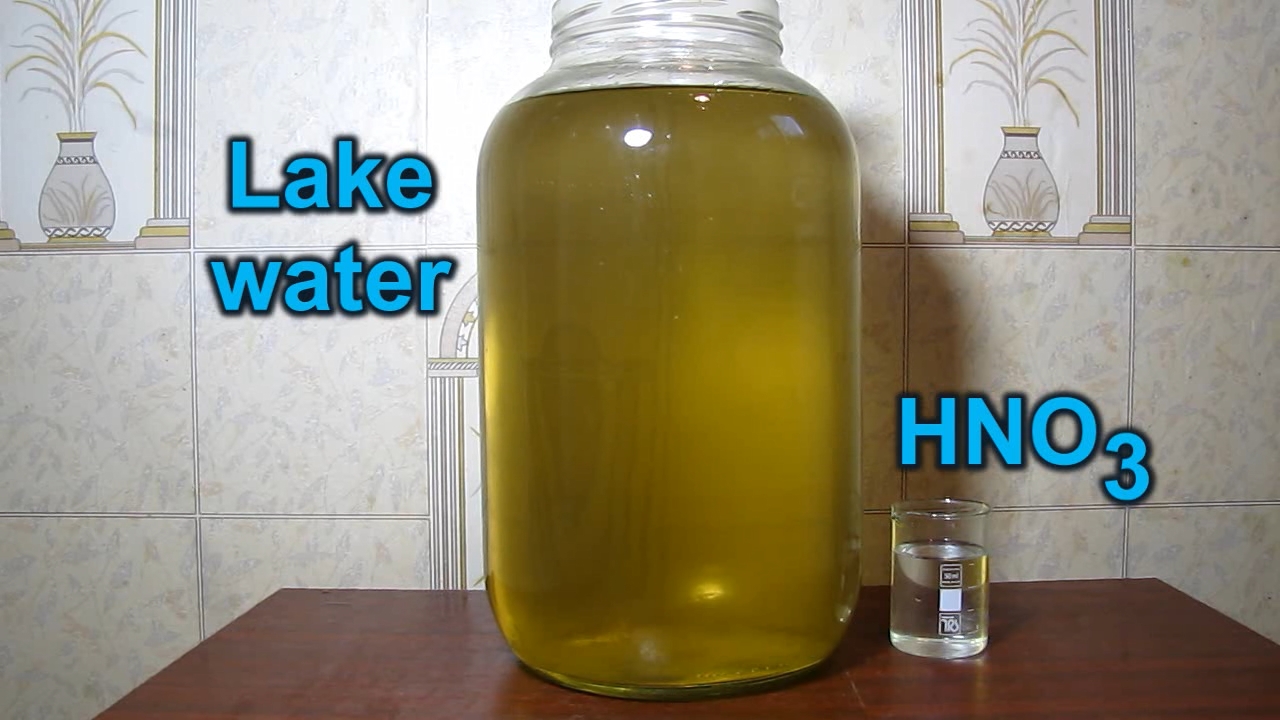
Lake water and nitric acid |
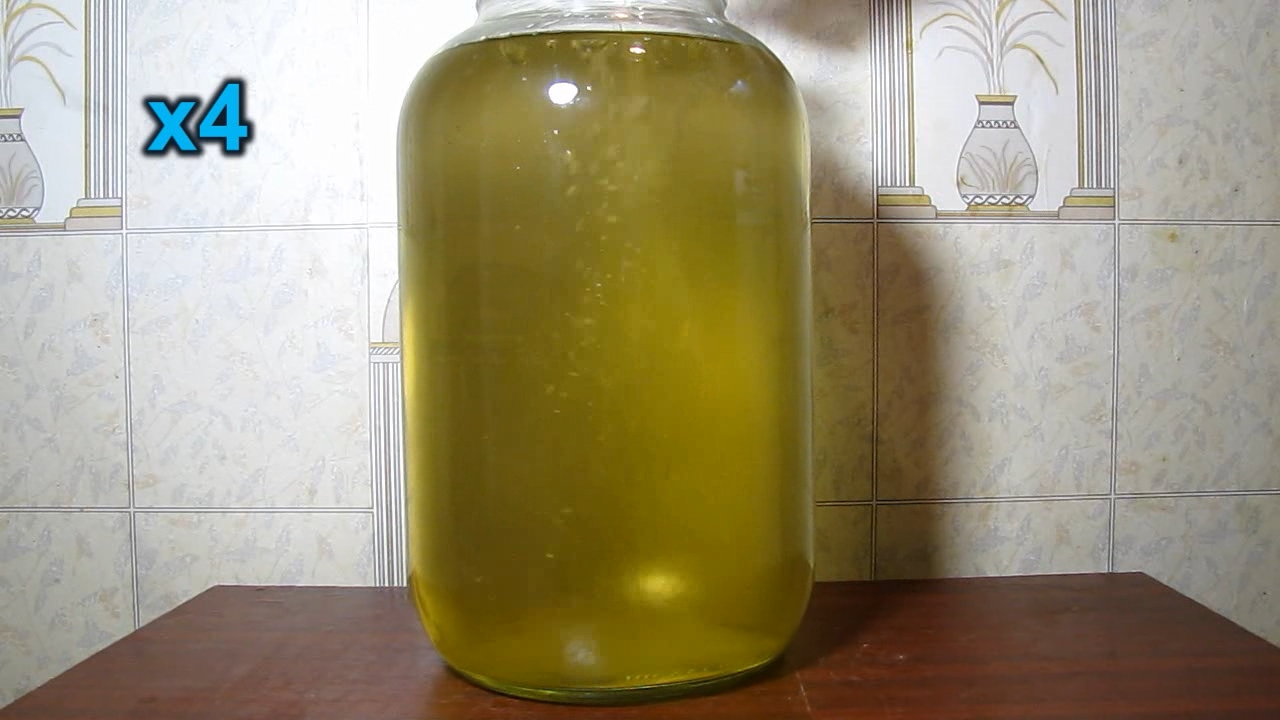
|
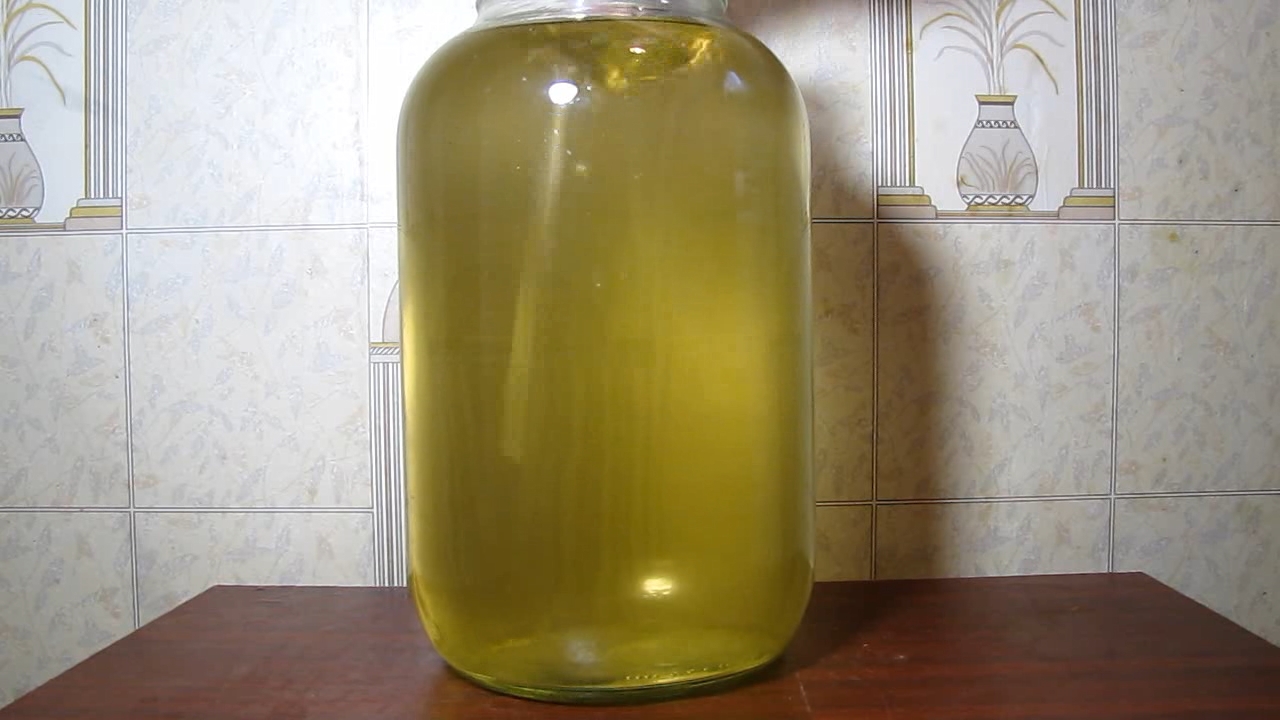
|
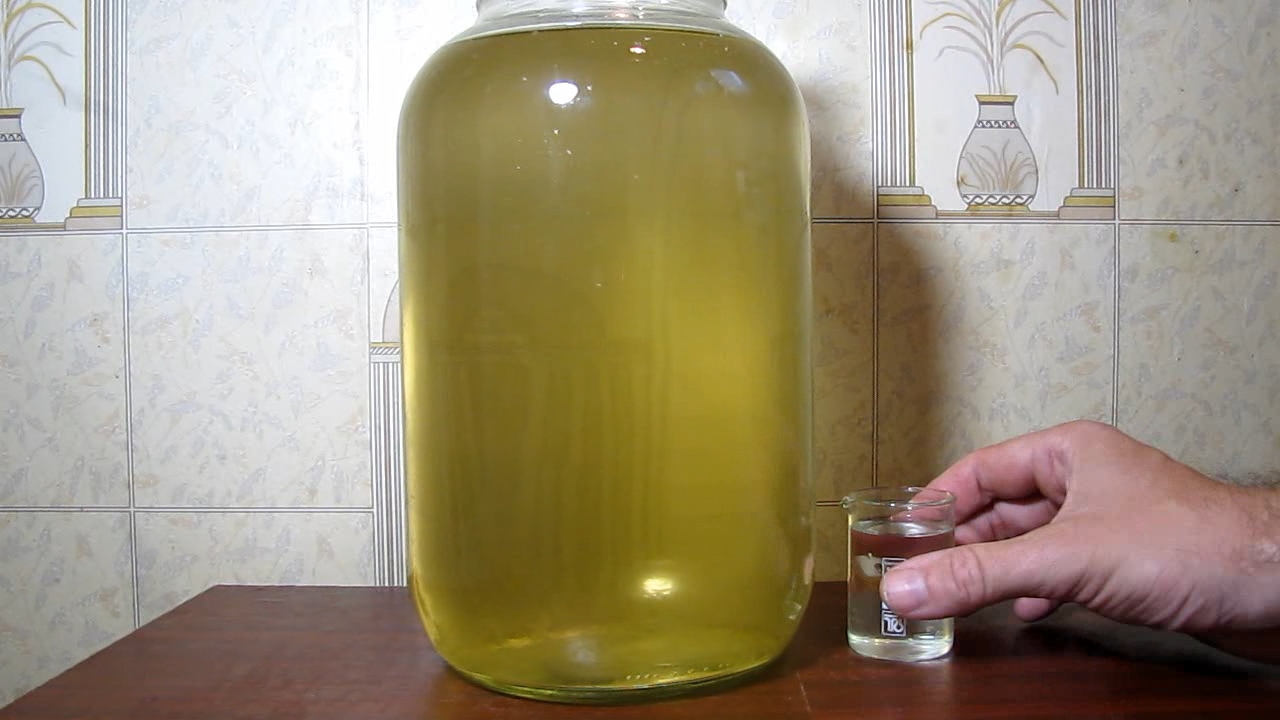
|
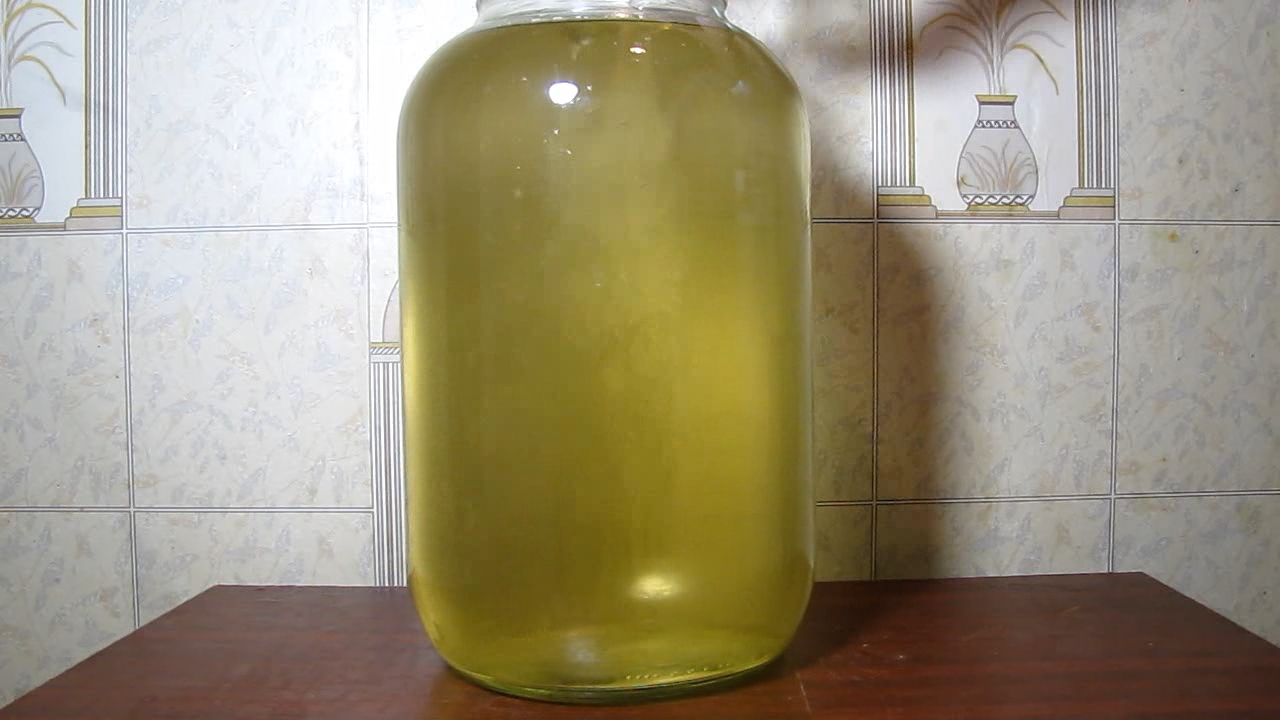
|

|
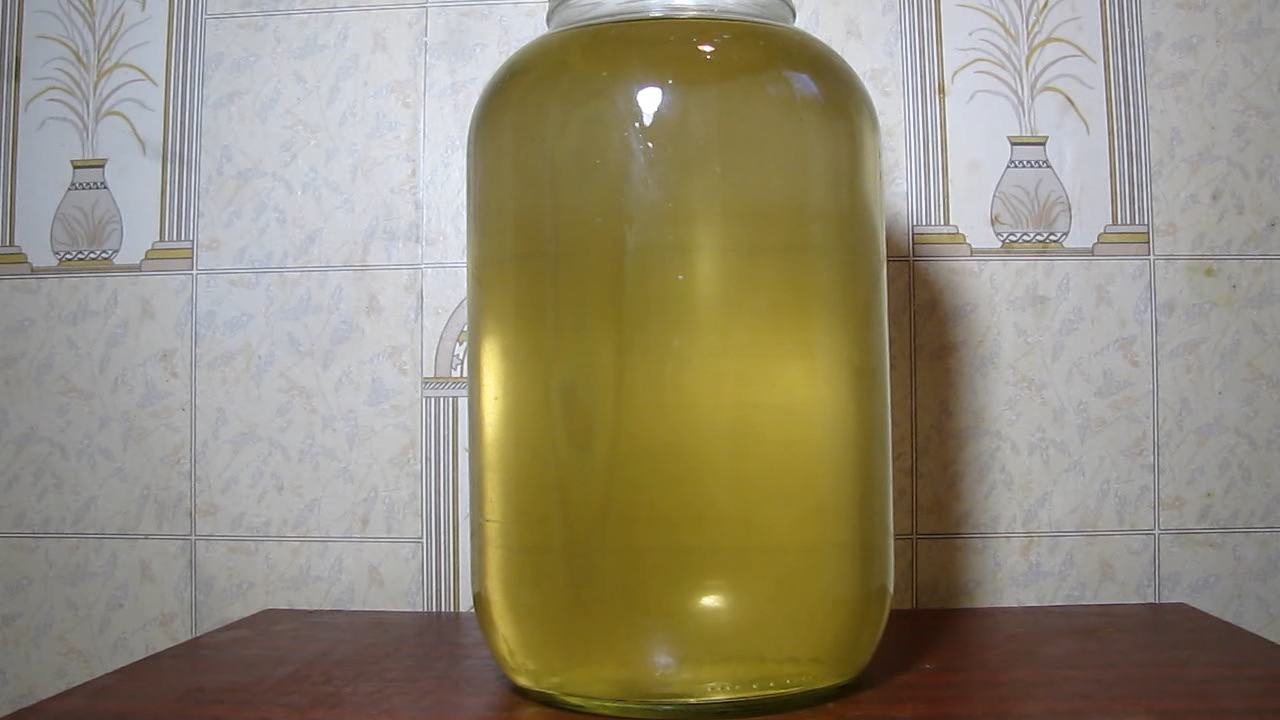
|

|
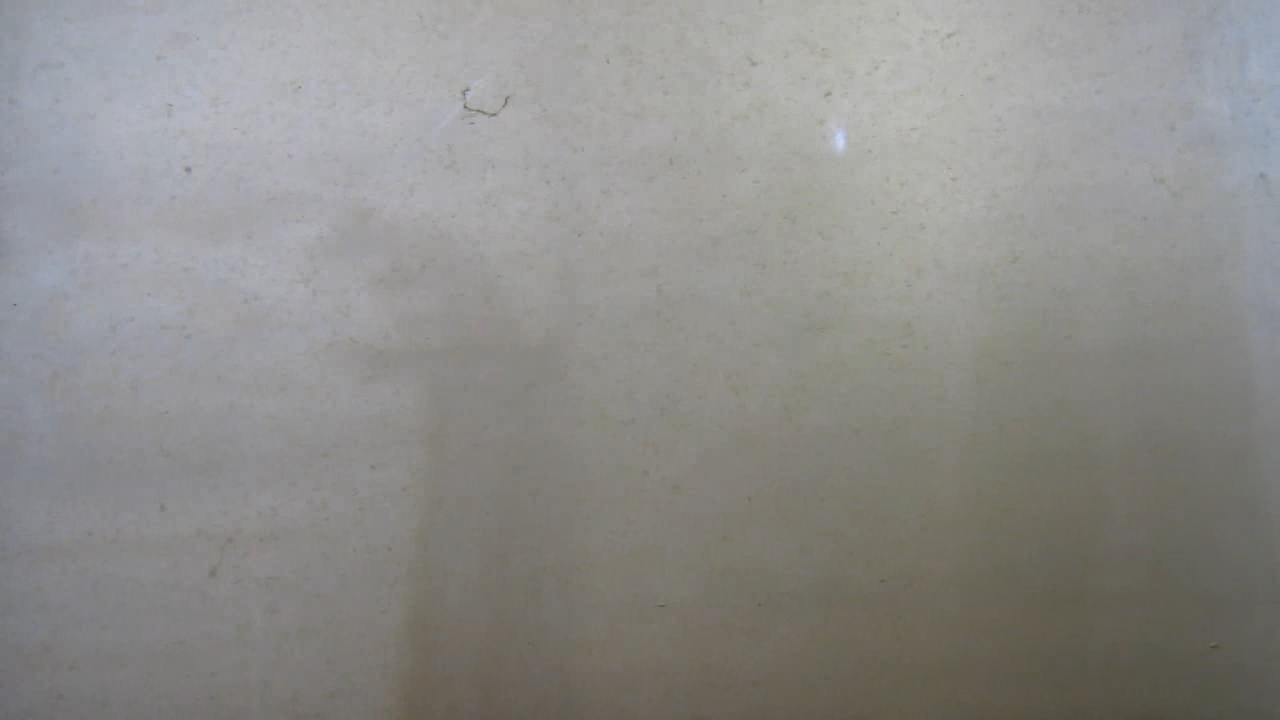
|

|
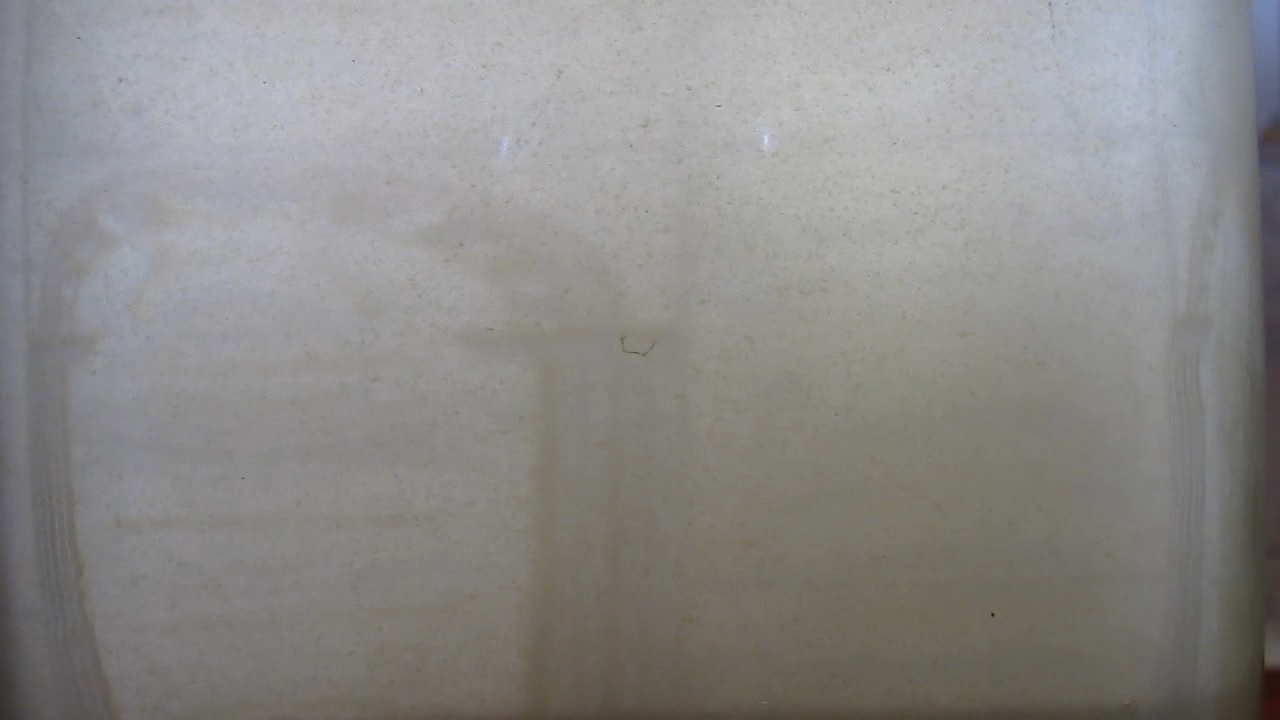
|
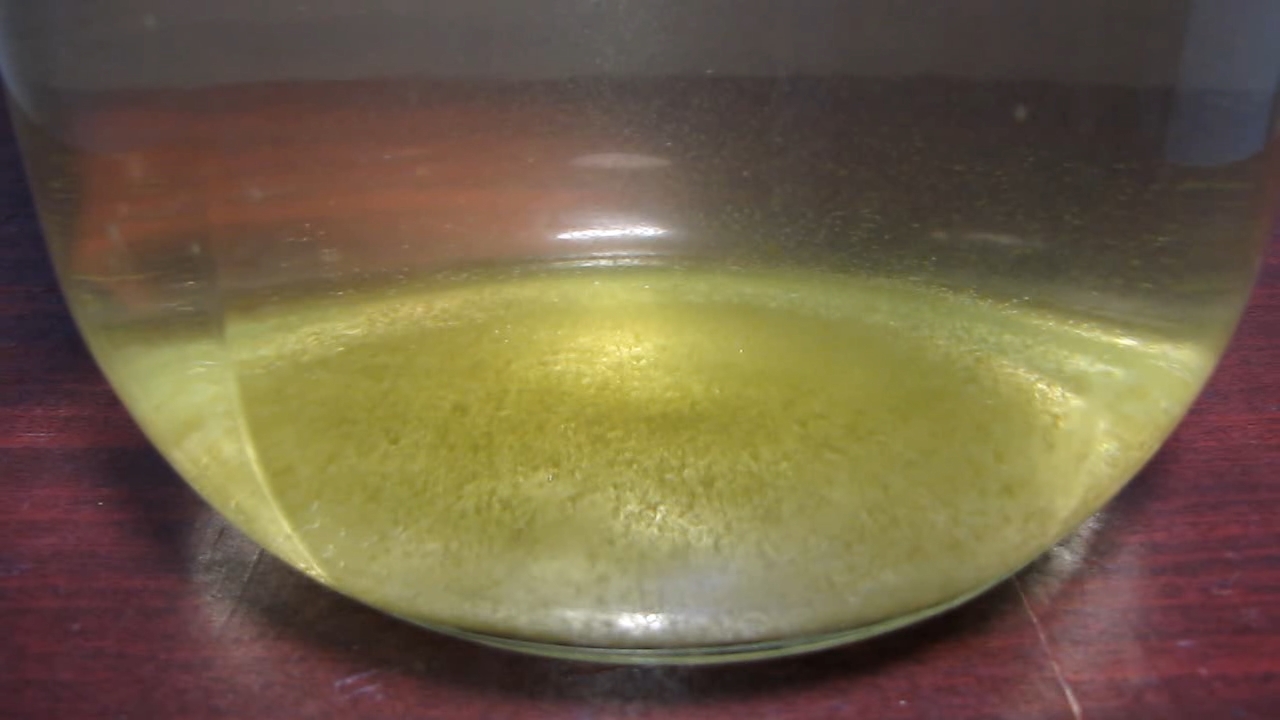
|
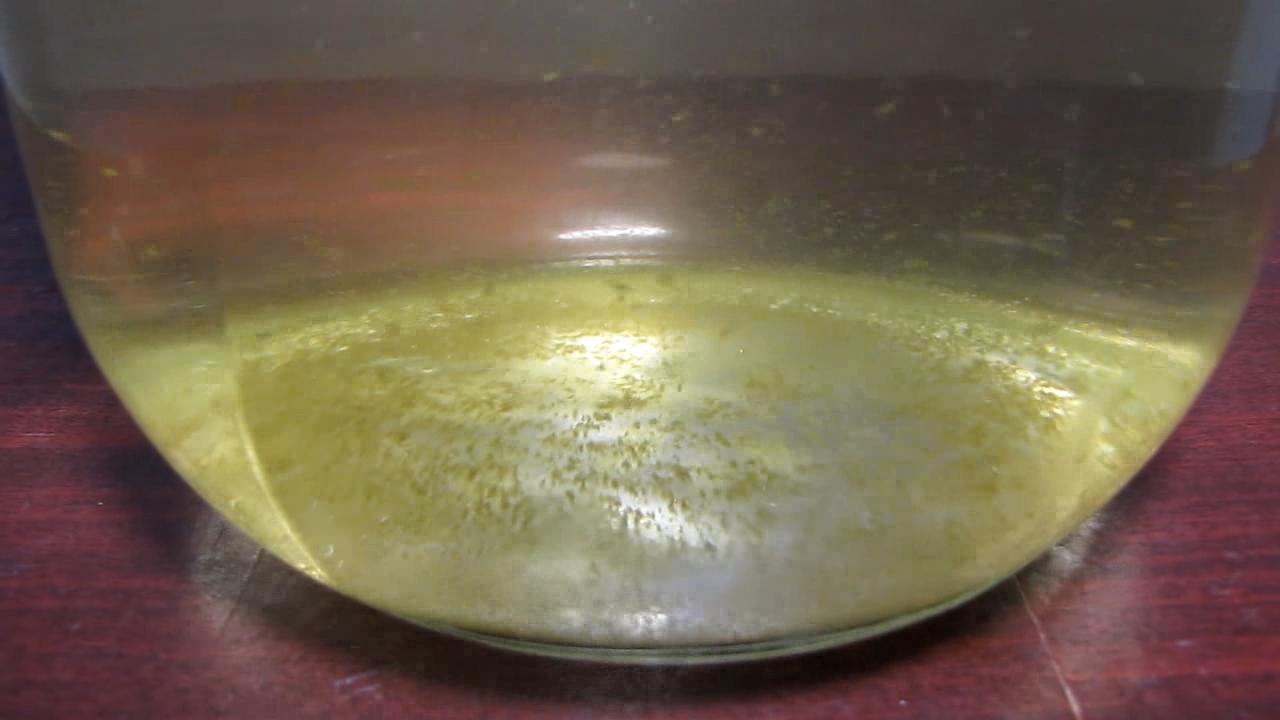
|

|
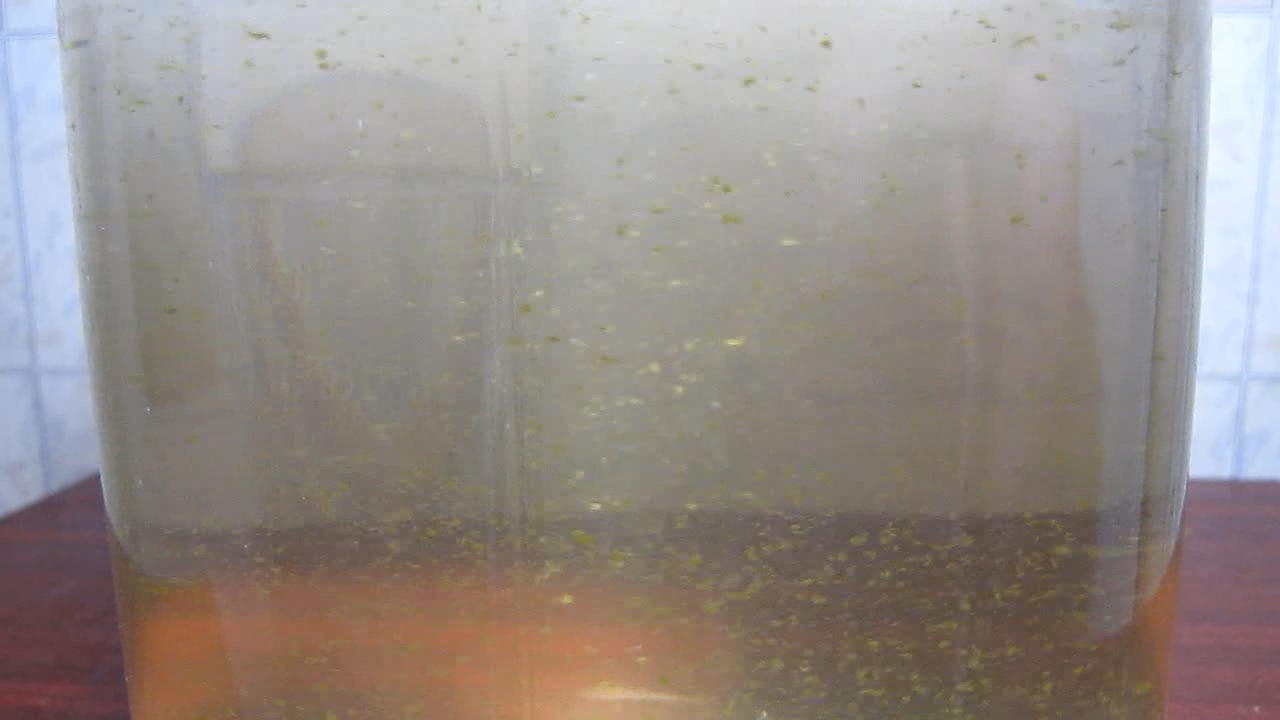
|

|

|
|
Initially, I planned to conduct several experiments simulating the process of natural water purification. The water from a local lake was used as an example.
So, I started with industrial reagents: iron (III) chloride and lime to model the industrial coagulation process. However, the following experiments deviated slightly from the topic. Let's get back to the main goal. Iron (III) and aluminium salts are important coagulants for industrial water treatment. After experiments with iron (III) chloride, aluminium salts should be used for this purpose. There were two aluminium salts: ammonium alum (ammonium aluminium sulfate) (NH4)Al(SO4)2·12H2O and aluminium sulfate Al2(SO4)3·18H2O. I chose the last compound because the solubility of ammonium alum is too low. 1 g of aluminium sulfate was dissolved in 10 ml of distilled water. The solution was cloudy because the chemical had a technical grade of purity. In previous experiments with this aluminium sulfate, the solid particles had precipitated after a few hours, and the solution became clear, not cloudy. But in this case, I decided that a small amount of solid particles in the solution does not matter (due to the large volume of precipitate that should form during the experiment). Aluminium sulfate reacts with carbonates and bicarbonates of natural water and forms the aluminium hydroxide precipitate. Aluminium hydroxide adsorbs dissolved impurities and mechanically captures solid particles, collects in flakes, and settles, dragging impurities to the bottom. I took a new water sample from the same lake. In this case, the visible solid particles were contained in the water. The water was greenish yellow and cloudy. After a few hours of standing, a dark green precipitate formed (a small amount). The lake water (200 ml) was poured into a glass [1], then 1 ml of aluminium sulfate solution was added. The liquid was stirred. As a result, two parallel processes were observed. After a few seconds, the liquid became white and cloudy (aluminium hydroxide began to precipitate). At the same time, a small amount of green flakes appeared during stirring (the initial green precipitate was dispersed). When the stirring was stopped, the green flakes quickly settled. Over time, the turbidity of the solution increased - the new portions of aluminium hydroxide formed. Light brown flakes appeared. These flakes consisted of aluminium hydroxide and adsorbed/captured impurities. The flakes gradually settled to the bottom of the glass. After the complete precipitation of the flakes, the liquid became colourless, but visible turbidity remained. It is possible that these were small solid particles that were originally in the aluminium sulfate solution. Fortunately, this did not become a problem: after a few hours, all solid particles precipitated, and the liquid became clear. Unfortunately, the obtained water is not potable. Firstly, disinfection is needed. Secondly, the water may contain an excess of aluminium sulfate that is invisible visually, since aluminium salts are colourless (unlike iron(III) salts). But the goal of the experiment has been achieved: coloured organic impurities were removed from the lake water. __________________________________________________ 1 A small technical problem took place. After sampling, I put the bottle with the water sample into a refrigerator to prevent the algae growth. Then, when I started the experiment and poured the cold water into a glass, the walls of the glass were fogged up. Paper or cloth should not be used to dry the glass, otherwise, fibres will stick to the glass. As a result, the video quality may deteriorate. I used a foam sponge, but this was not the best variant: drops of water remained on the surface, they were noticeable in the video. |
|
Сначала я планировал провести несколько экспериментов, моделирующих процесс очистки природной воды на примере зеленовато-желтой воды из местного озера.
Раз так - начал с промышленных реагентов: хлорида железа (III) и извести, чтобы смоделировать процесс промышленной коагуляции. Но последующие эксперименты несколько отклонились от темы. Вернемся к основной цели. Соли железа (III) и алюминия являются важными коагулянтами для промышленной очистки воды. После опытов с хлоридом железа (III) для этой цели целесообразно попробовать и соли алюминия. В наличии были две соли алюминия: алюмоаммонийные квасцы (сульфат алюминия-аммония) (NH4)Al(SO4)2·12H2O и сульфат алюминия Al2(SO4)3·18H2O. Я выбрал последнюю соль, поскольку растворимость аммонийно-алюминиевых квасцов слишком низкая. 1 г сульфата алюминия растворял в 10 мл дистиллированной воды. Раствор получился мутным, поскольку реактив имел техническую степень чистоты. В предыдущих экспериментах с этим же сульфатом алюминия твердые частицы выпадали в осадок через несколько часов, и раствор становился полностью прозрачным (не мутным). Но в этот раз я решил, что небольшое количество твердых частиц в растворе не имеет значения (по той причине, что в ходе эксперимента должен будет образоваться большой объем осадка). Сульфат алюминия реагирует с карбонатами и бикарбонатами природной воды с образованием осадка гидроксида алюминия. Гидроксид алюминия адсорбирует растворенные примеси, механически захватывает твердые частицы, собирается в хлопья, и оседает, увлекая за собой примеси на дно. Отобрал новый образец воды из озера. В данном случае в воде были видимые твердые частицы. Вода имела зеленовато-желтый цвет и была мутной. Через несколько часов стояния образовался темно-зеленый осадок (небольшое количество). Озерную воду (200 мл) налил в стакан [1-1], затем добавил 1 мл раствора сульфата алюминия. Жидкость перемешивал. В результате наблюдались два параллельных процесса. Через несколько секунд жидкость стала белой и мутной (начал выпадать гидроксид алюминия). При перемешивании появлялось небольшое количество зеленых хлопьев (первоначальный зеленый осадок диспергировался). Если перемешивание приостановить - зеленые хлопья быстро оседали. Со временем мутность раствора увеличивалась - образовывались новые порции гидроксида алюминия. Осадок собрался в светло-коричневые хлопья, которые состояли из гидроксида алюминия и адсорбированных/захваченных ним примесей. Хлопья постепенно оседали на дно стакана. После полного осаждения хлопьев жидкость стала бесцветной, но заметная мутность сохранялась. Возможно, это были мелкие твердые частицы, которые были изначально в растворе сульфата алюминия. К счастью, это не стало проблемой: через несколько часов все твердые частицы выпали в осадок, а жидкость стала прозрачной. К сожалению, полученная вода непригодна для питья. Во-первых, необходима дезинфекция. Во-вторых, в воде может содержаться невидимый визуально избыток сульфата алюминия, поскольку соли алюминия бесцветны (в отличие от солей железа(III)). Но цель эксперимента достигнута: окрашенные органические примеси удалены из воды (взятой из озера). _________________________________________________ 1-1 Имела место небольшая техническая проблема. После отбора воды я поставил бутылку с пробой в холодильник, чтобы предотвратить рост водорослей. Потом, когда я начал эксперимент и налил холодную воду в стакан, стенки стакана запотели. Для протирания стенок стакана не следует использовать бумагу или ткань - иначе к стеклу прилипнут волокна. В результате качество видео может ухудшиться. Я использовал поролоновую губку, но это не лучший вариант: на поверхности остаются капли воды, заметные на видео. |

Lake water and aluminium sulfate |
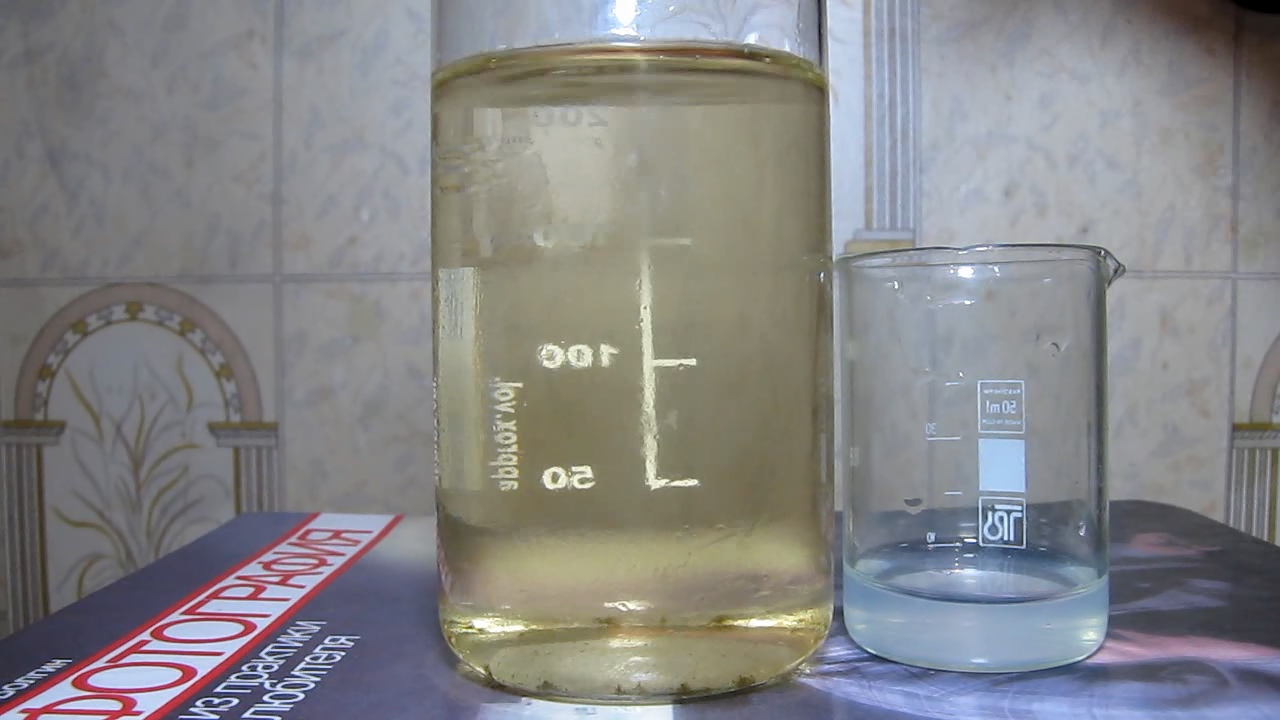
|
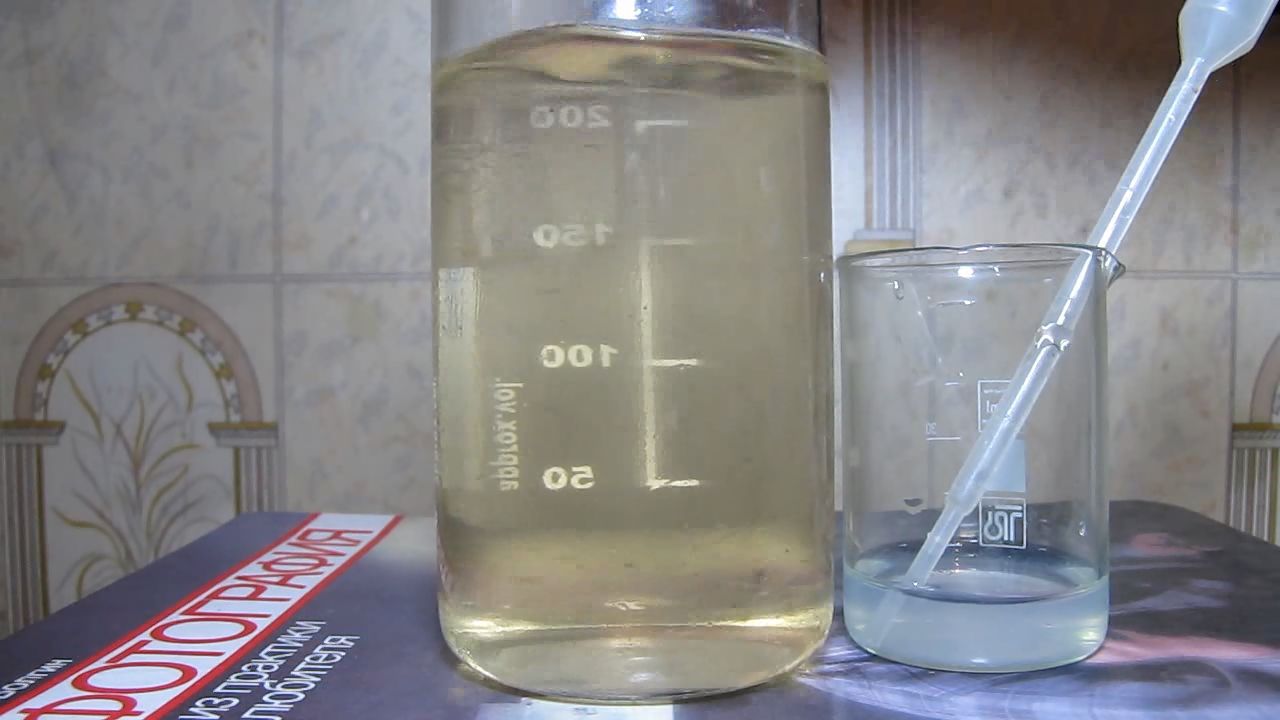
|

|
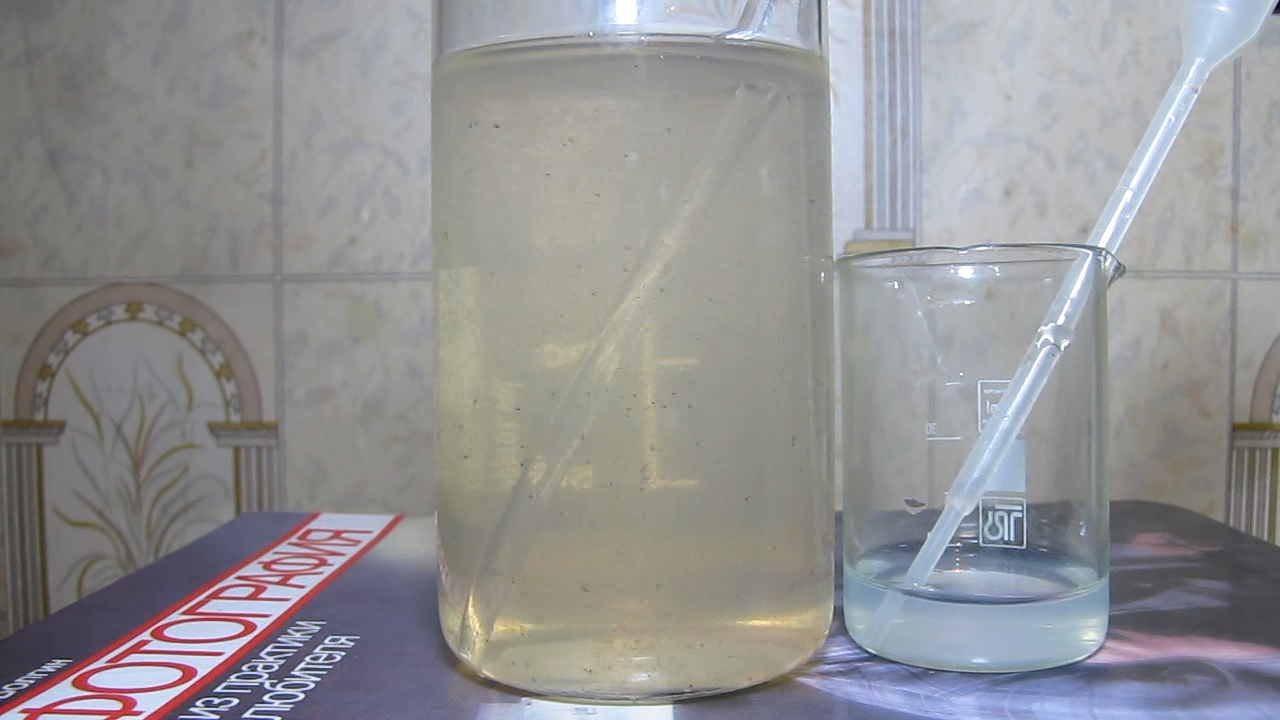
|
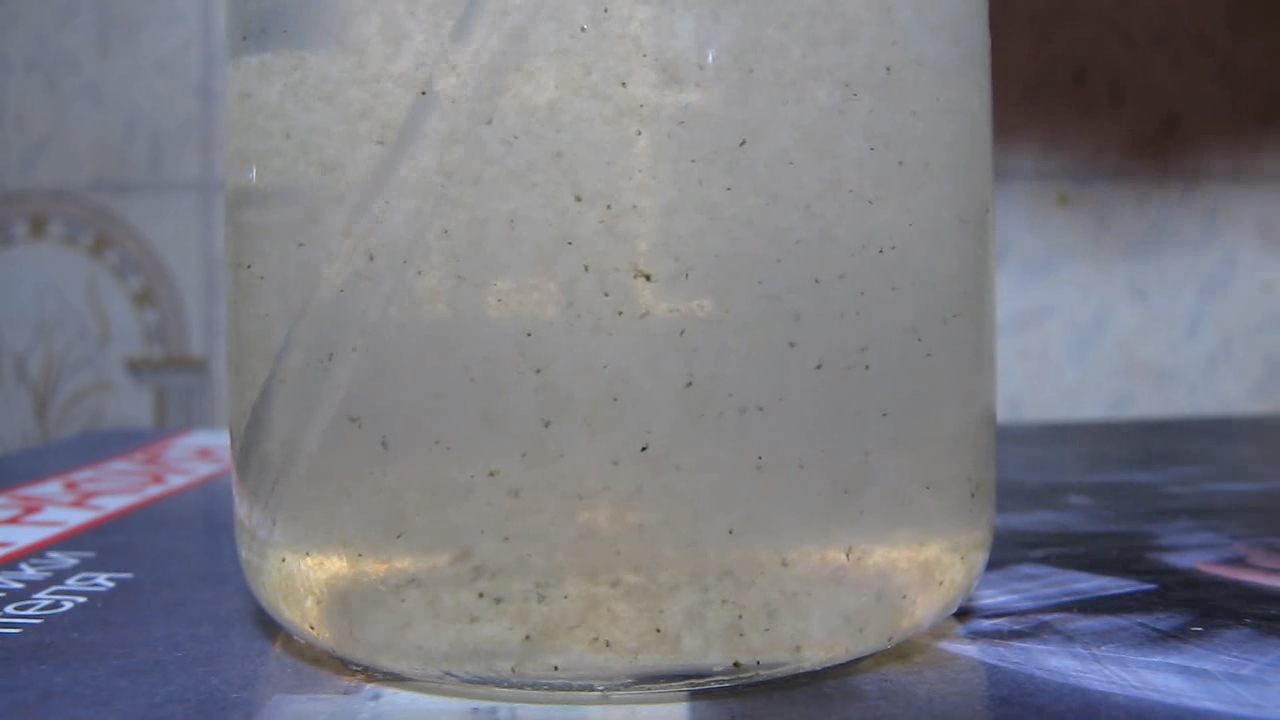
|
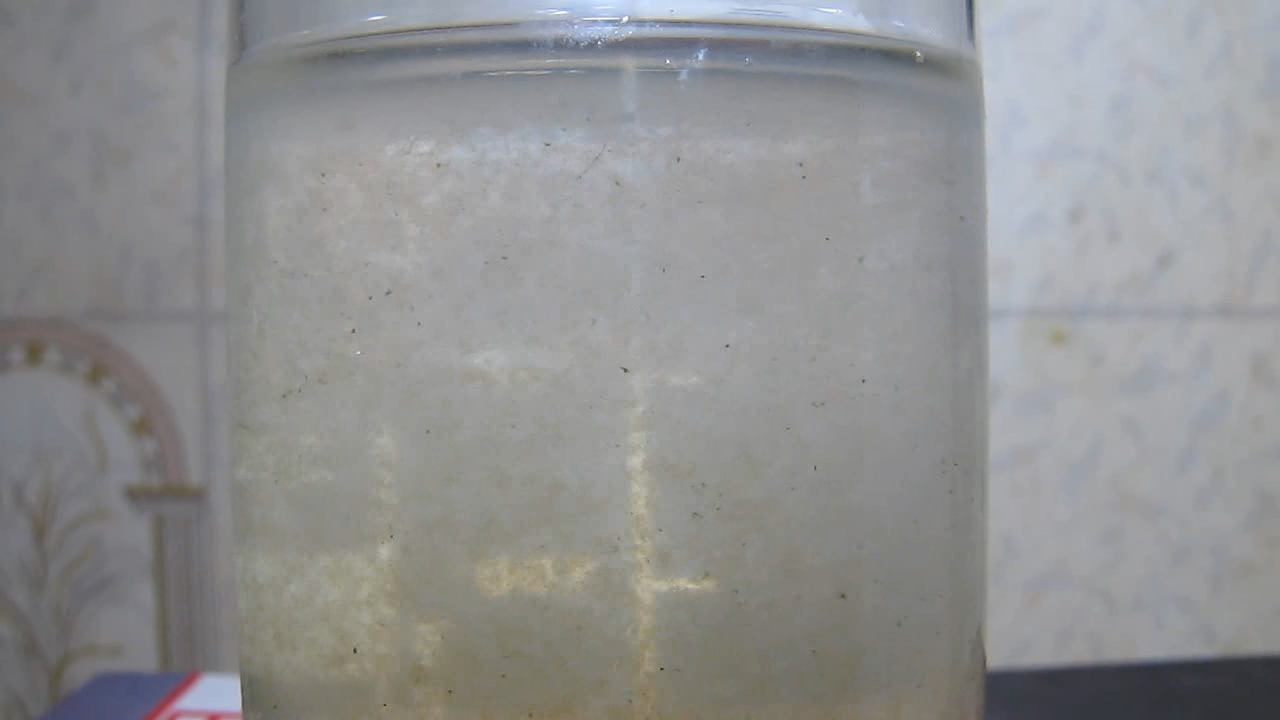
|
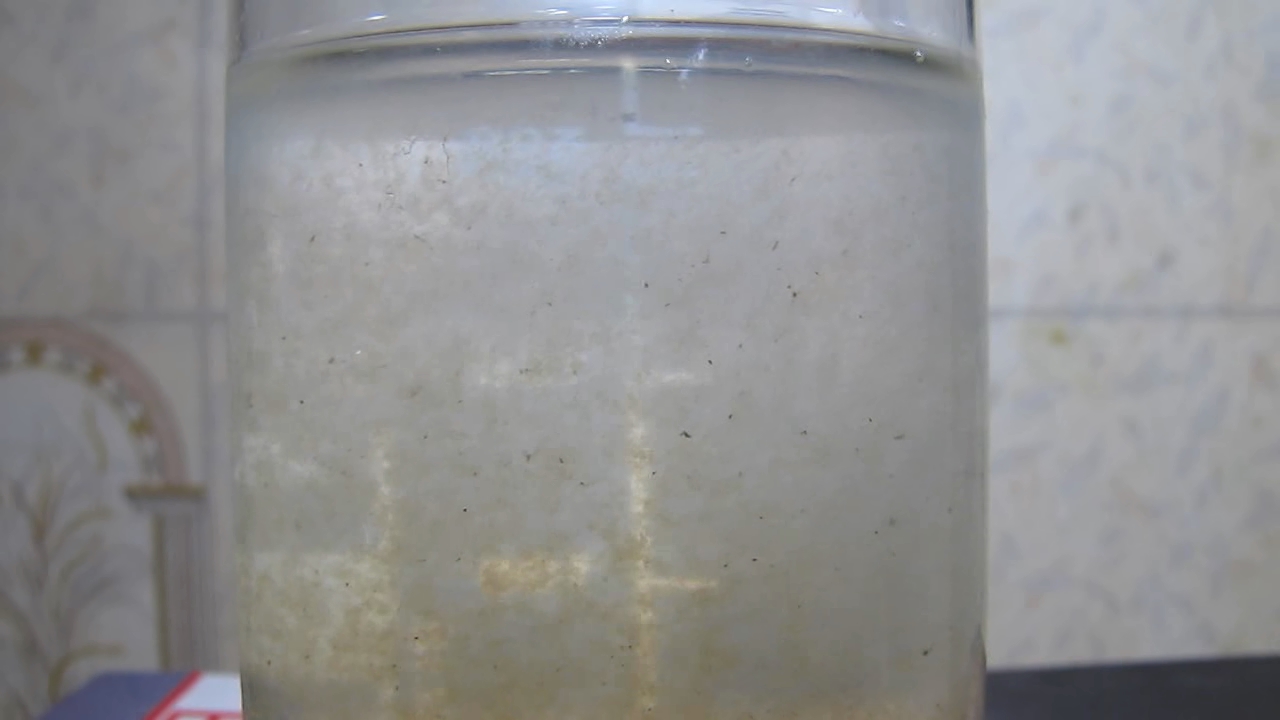
|
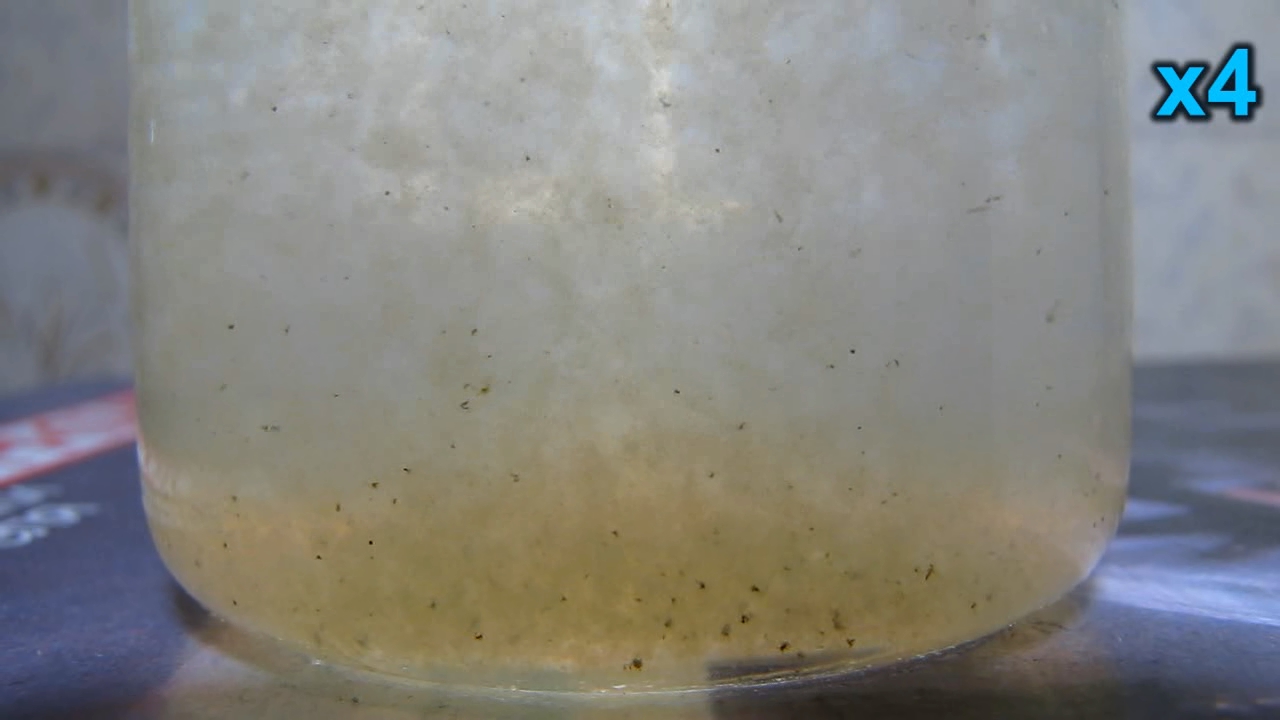
|

|

|
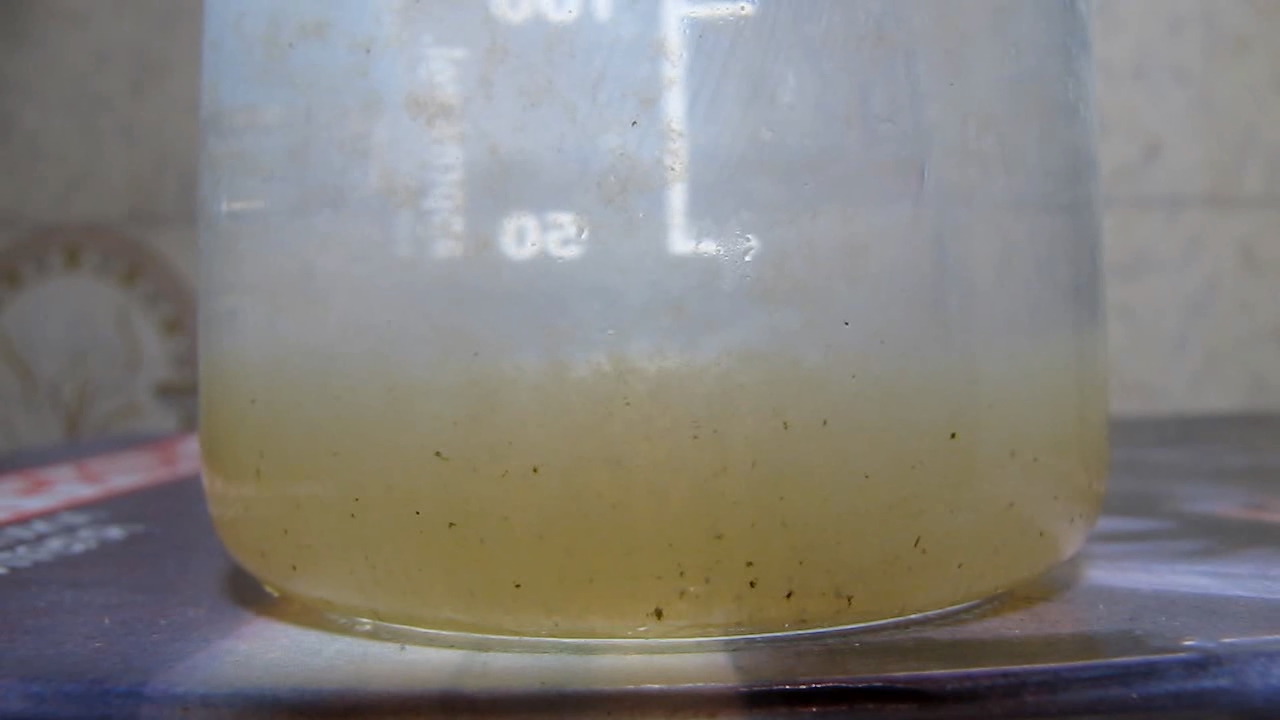
|
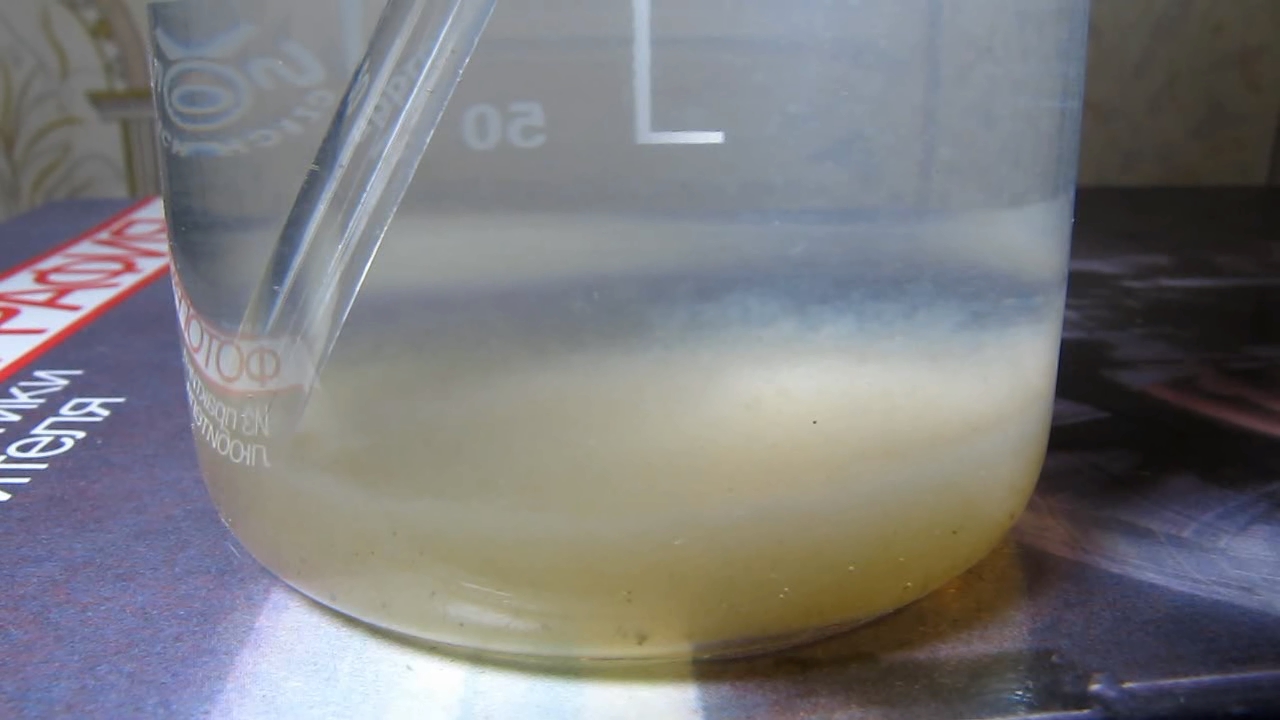
|
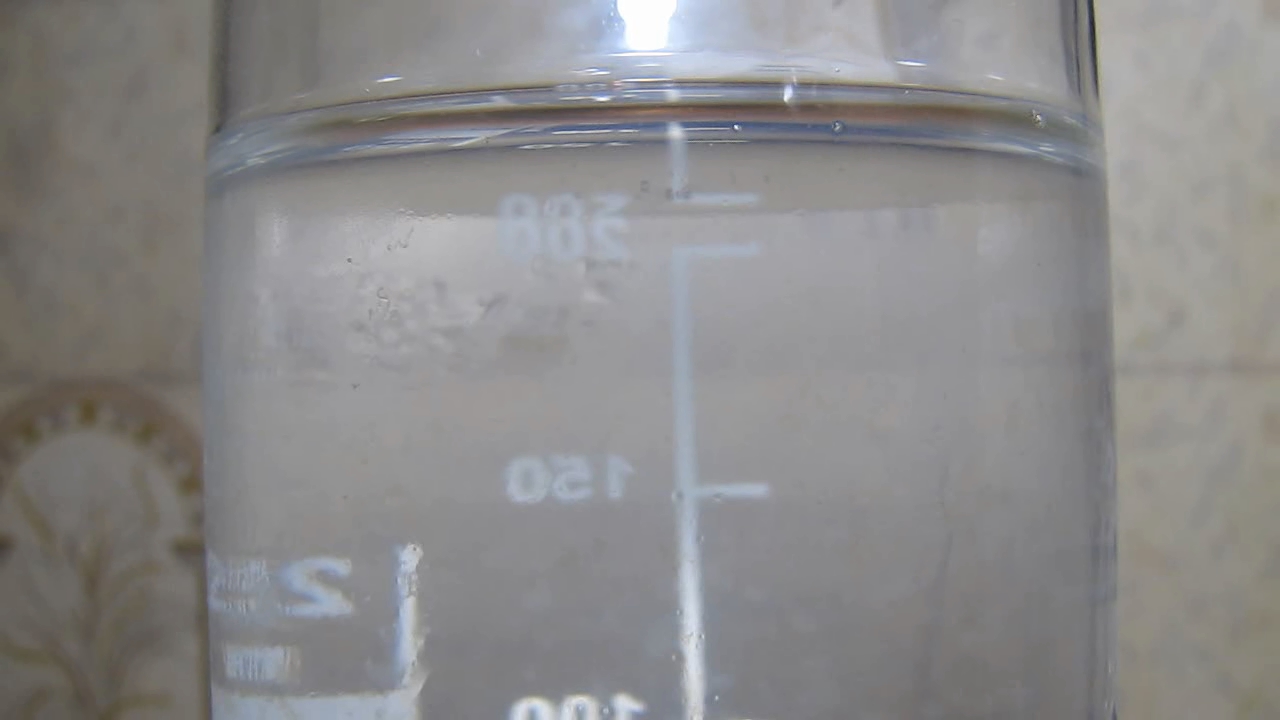
|

|
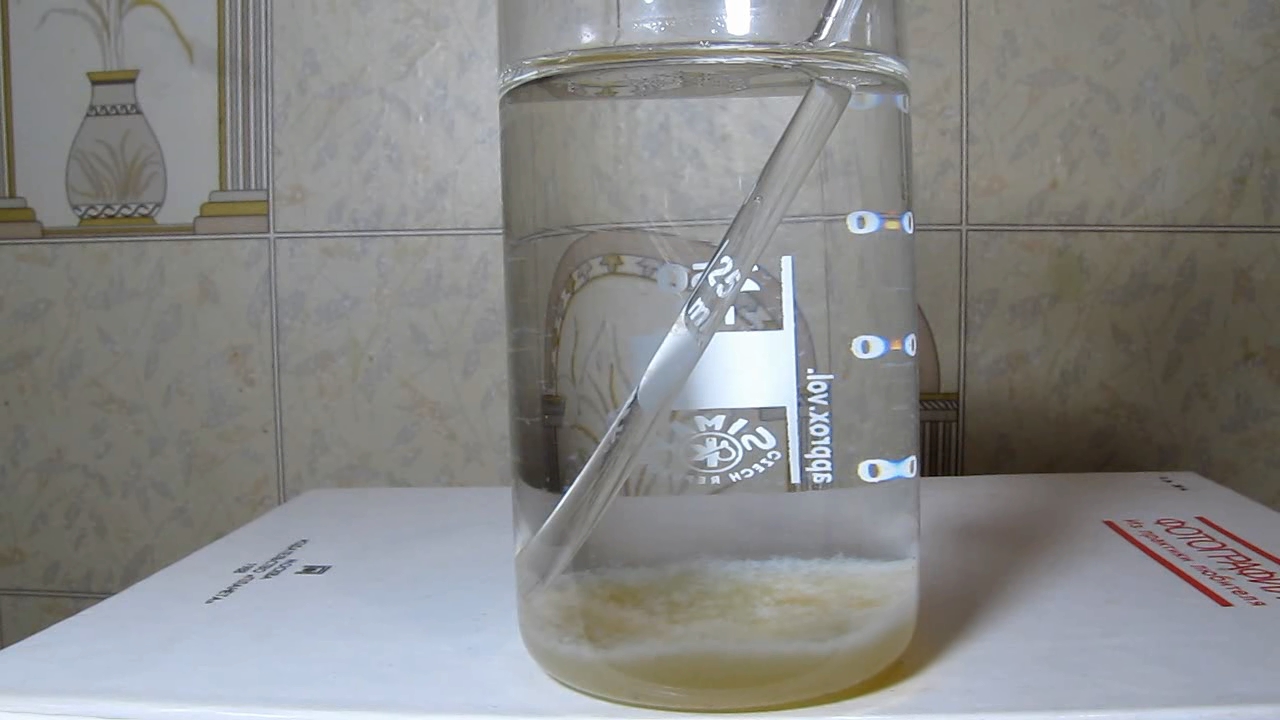
|
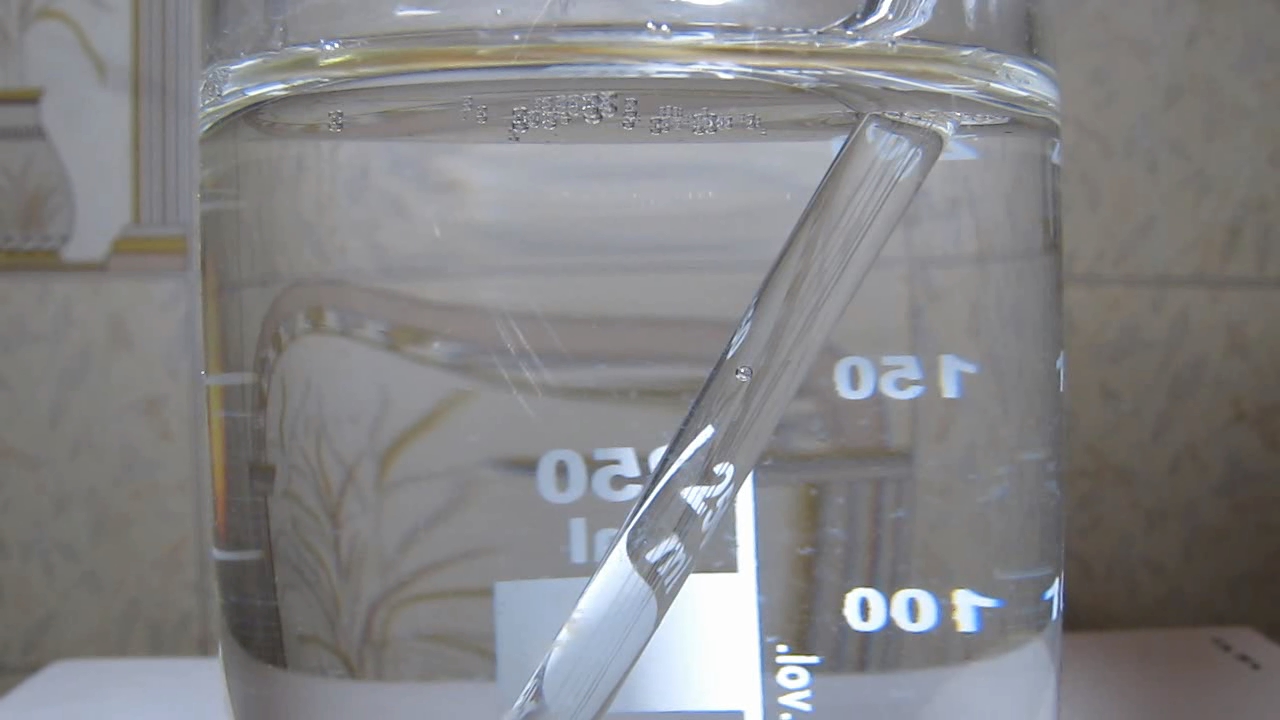
|
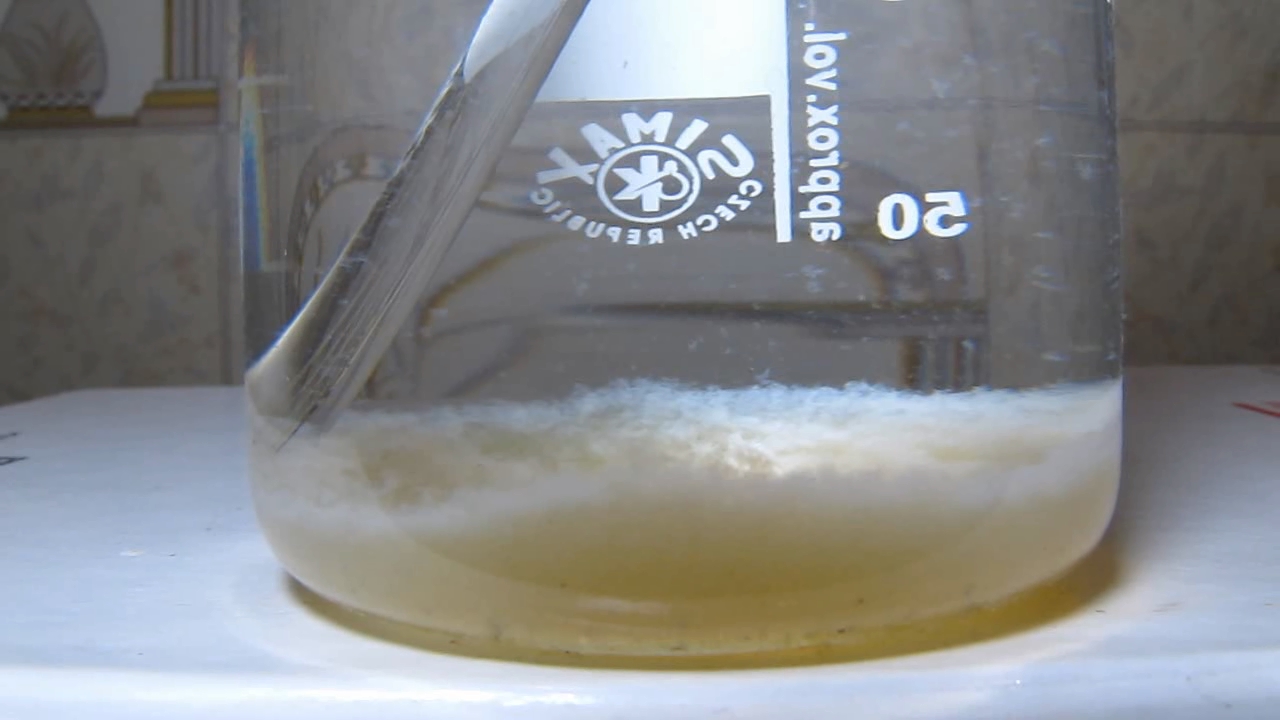
|
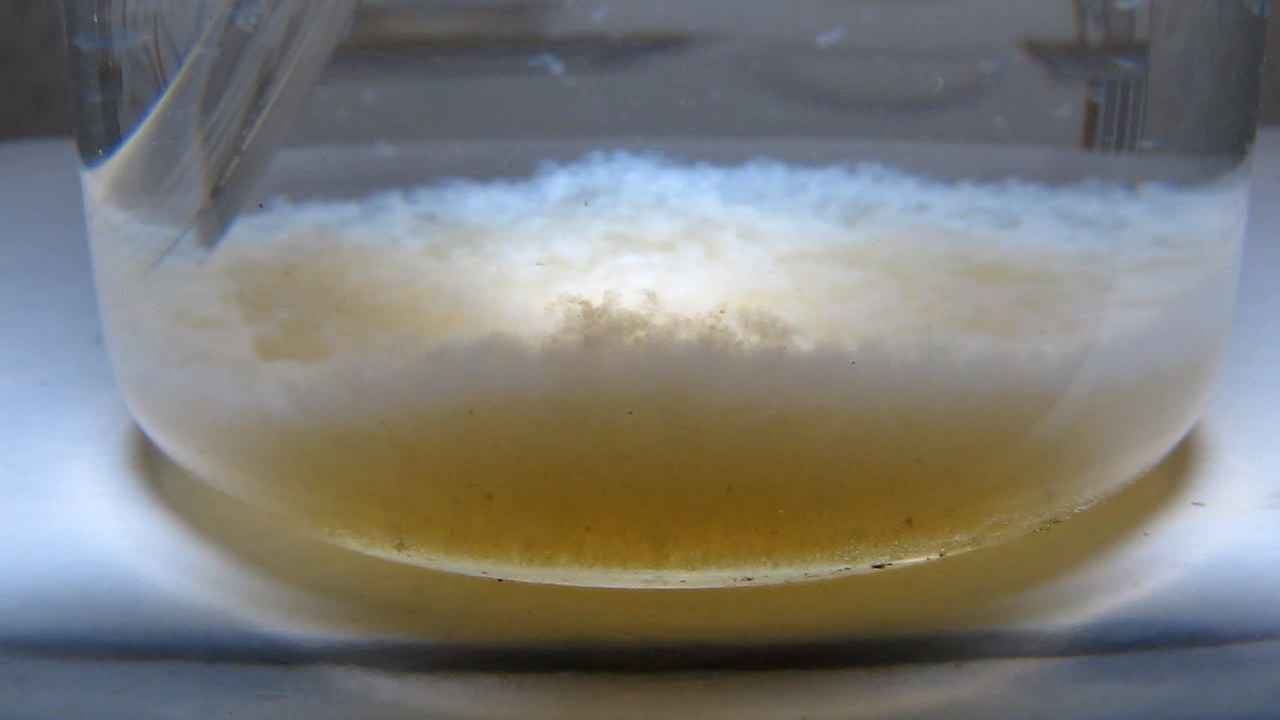
|
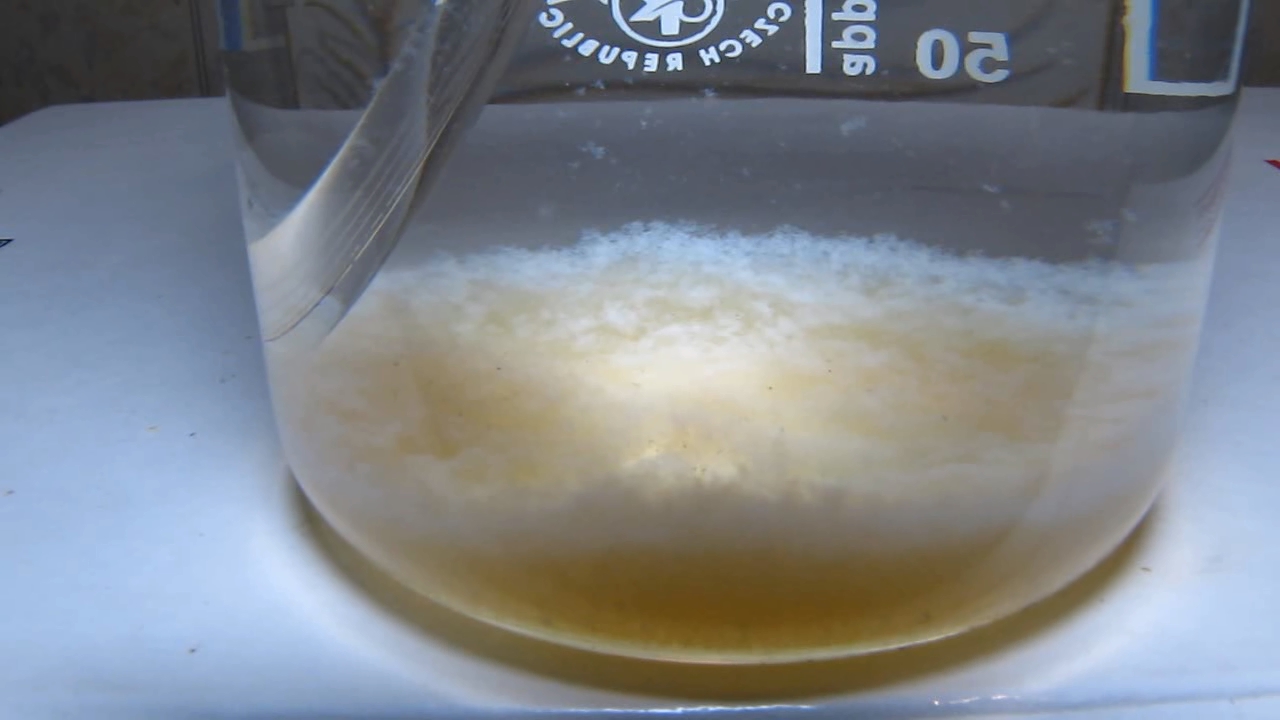
|
|
В предыдущей части статьи описано удаление примесей из природной (озерной) воды методом коагуляции. Реагентом (коагулянтом) служил сульфат алюминия. Решил повторить этот эксперимент, но в большем масштабе. В этот раз использовал сразу 5 л воды из озера.
Образец воды имел зеленовато-желтый цвет, был слегка мутным и почти не содержал видимых твердых частиц. Приготовил раствор с такой же концентрацией сульфата алюминия (2 г в 20 мл дистиллированной воды), но в этот раз подождал, пока все не растворившиеся твердые частицы осядут на дно и отобрал пипеткой прозрачный раствор (без мути). 5 л воды из озера налил в стеклянную банку. К воде добавил 1 мл раствора сульфата алюминия, перемешал. В жидкости возникла муть. Подождал. Существовала вероятность, что добавленного сульфата алюминия уже было достаточно, но я решил, что не стоит затягивать процесс. Поэтому добавил еще 1 мл раствора сульфата алюминия и перемешал содержимое банки. Муть усилилась. Потом добавил еще 1 мл раствора сульфата алюминия, перемешал. Муть еще более усилилась. Через несколько минут появились небольшие хлопья гидроксида алюминия, которые росли, плавая в растворе. Вскоре хлопья осадка достигли значительных размеров и приобрели коричневый цвет. Когда хлопья осели на дно, сформировав коричневый объемный осадок, жидкость над осадком осталась мутной - мелкие твердые частицы оседали медленно. Через полтора часа мелкие частицы осели, жидкость стала полностью прозрачной (не мутной). Интенсивность окраски раствора сильно ослабла, но не до нуля: вода все еще оставалась светло-коричневой. Вывод: использованное количество коагулянта (3 мл) было недостаточным для полного обесцвечивания воды. Добавил еще 2 мл раствора сульфата алюминия, перемешал. Осадок диспергировался - образовалась суспензия. После прекращения перемешивания осадок снова собрался в крупные коричневые хлопья, которые через несколько минут собрались на дне. Осталась мелкодисперсная муть, которая оседала несколько часов. После этого жидкость стала полностью прозрачной (не мутной), но сохранила легкий желтый оттенок. На видео остаточный оттенок воды незаметно, но при непосредственном наблюдении - отчетливо видно. Для полного обесцвечивания воды добавил еще 2 мл сульфата алюминия и перемешал. Описанные выше явления повторились, правда, в этот раз были и отличия. После того, как хлопья собрались на дне, мелкие частицы не оседали довольно долго; зато уже в процессе их осаждения было видно, что желтый цвет воды исчез полностью. Оставил банку на 10 часов. Этого хватило для полного осаждения всех твердых частиц. В этот раз поверх коричневого осадка выпали более светлые (почти белые) частицы: новые порции осадка гидроксида алюминия содержали меньше захваченных коричневых загрязнений. Над осадком была прозрачная и бесцветная вода. |
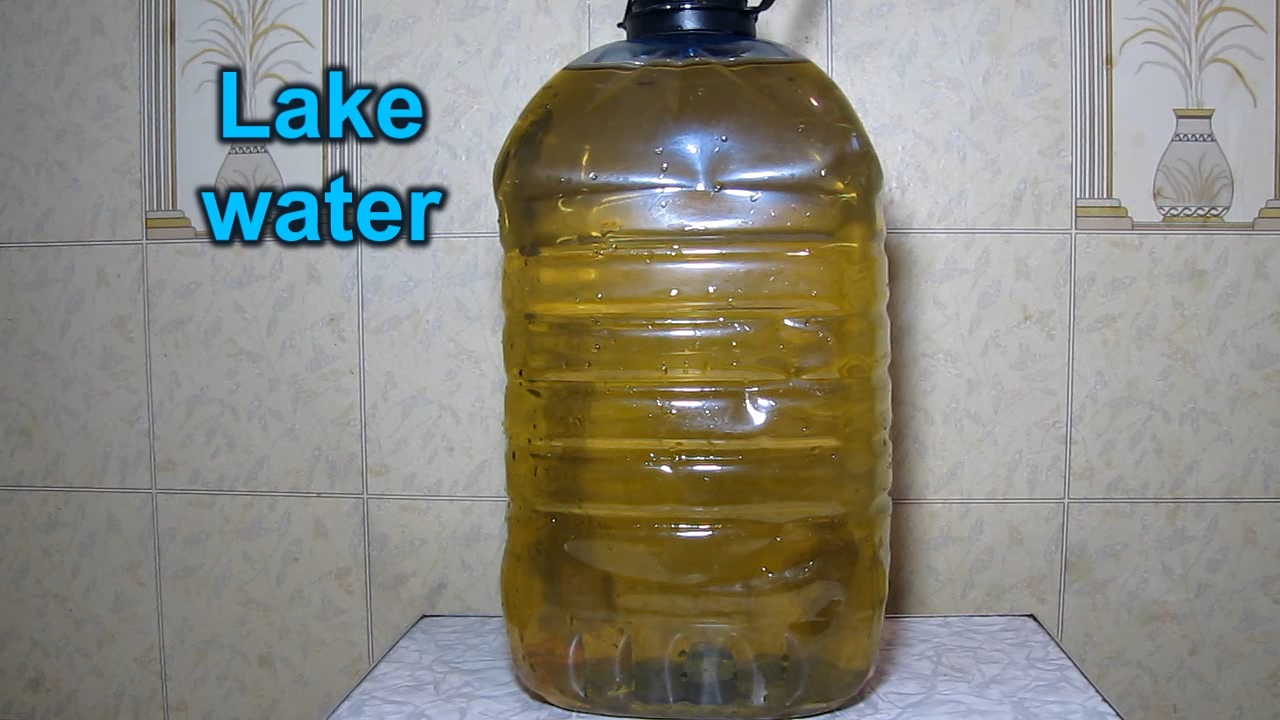
Lake water and aluminium sulfate |

|
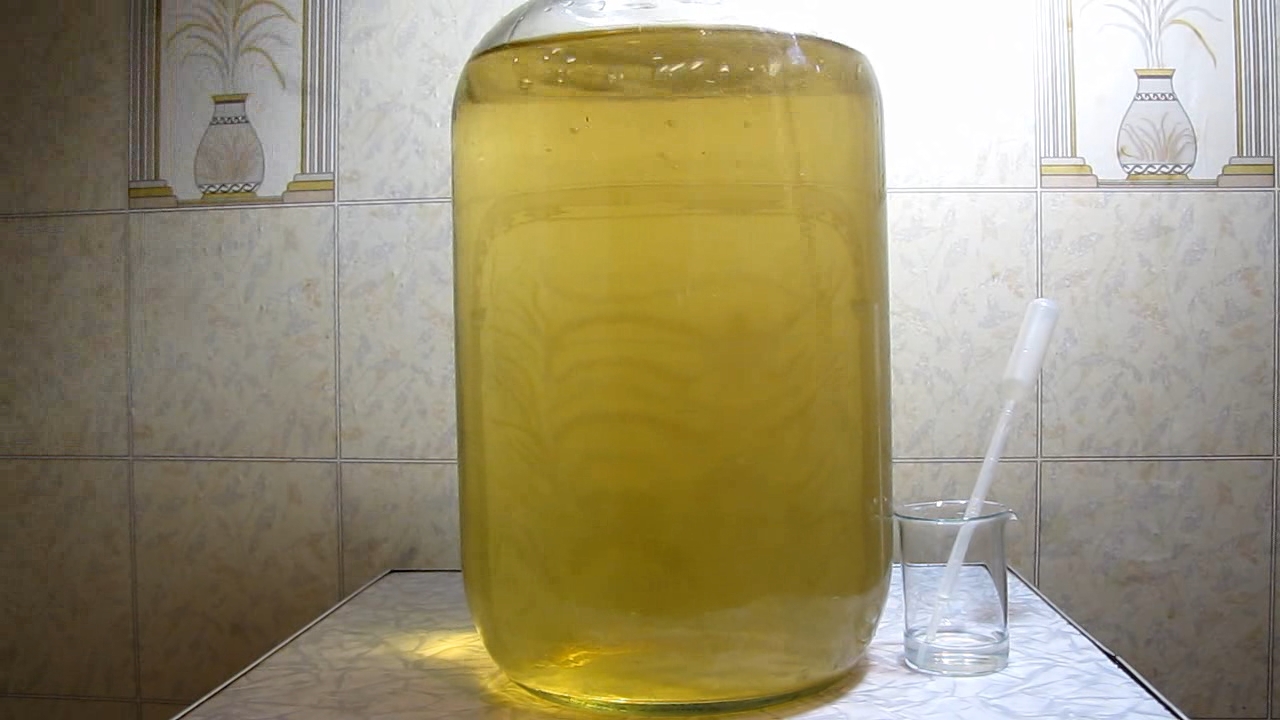
|

|

|

|

|
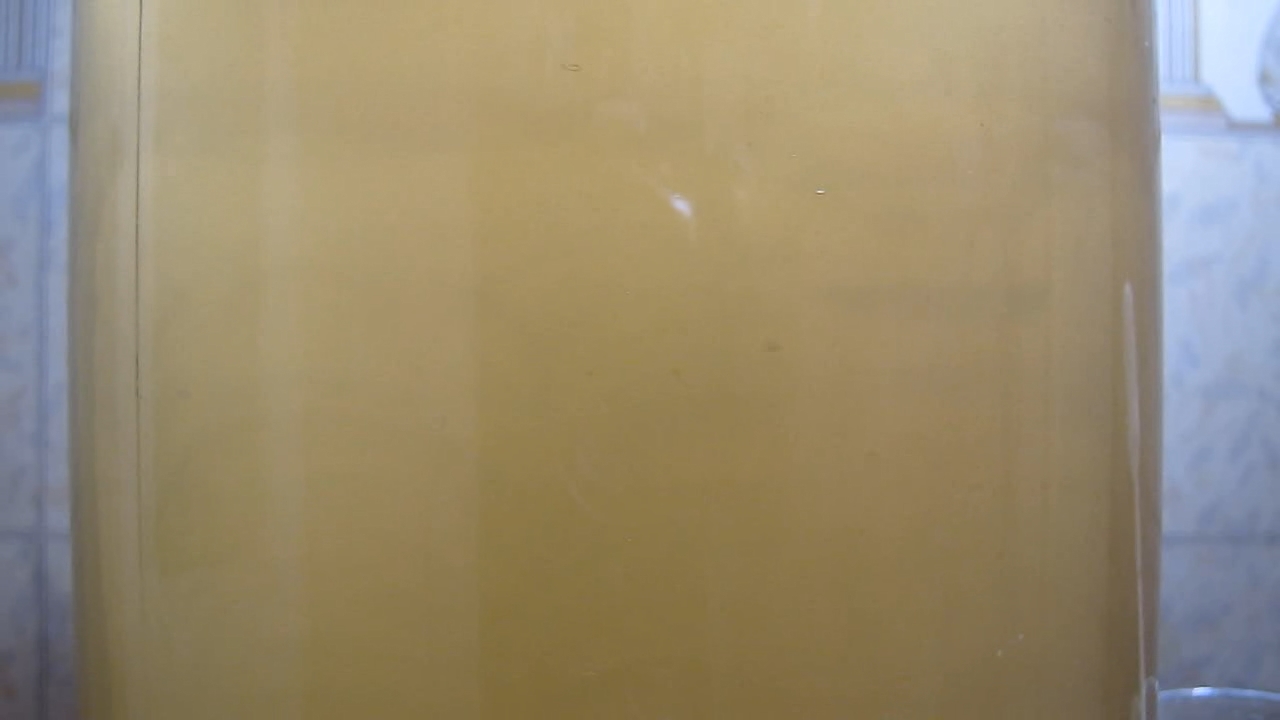
|

|
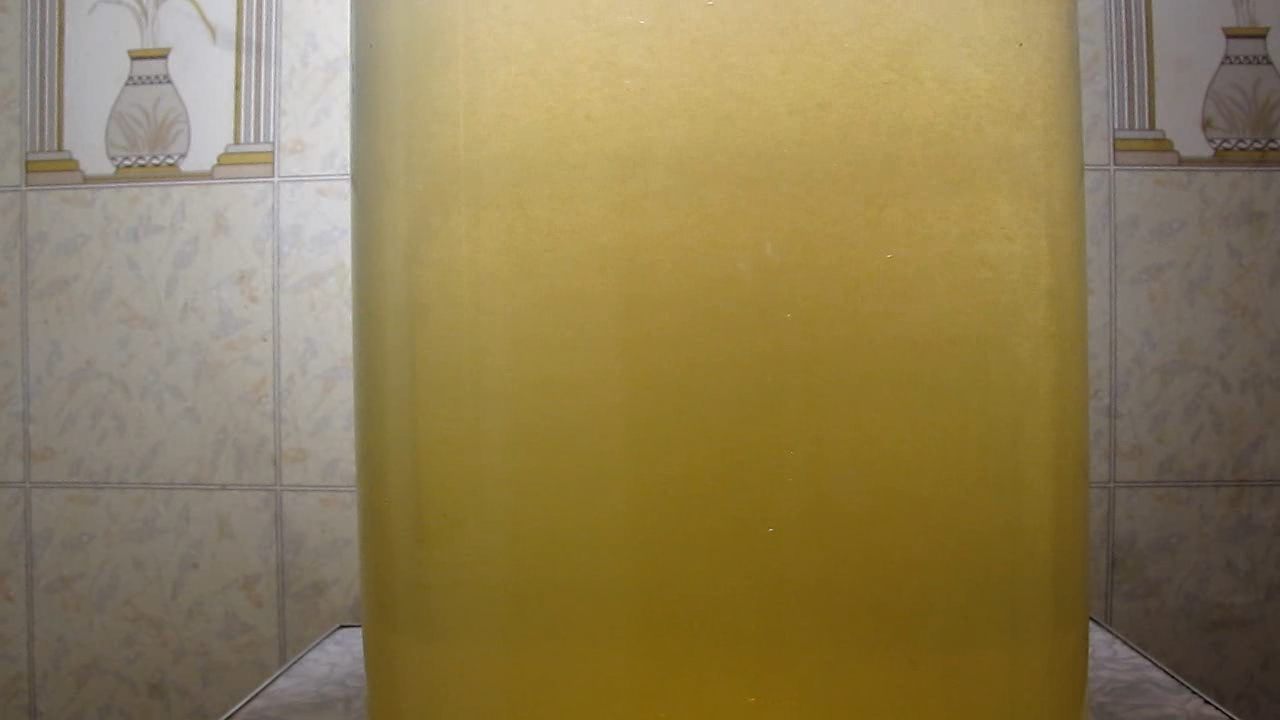
|
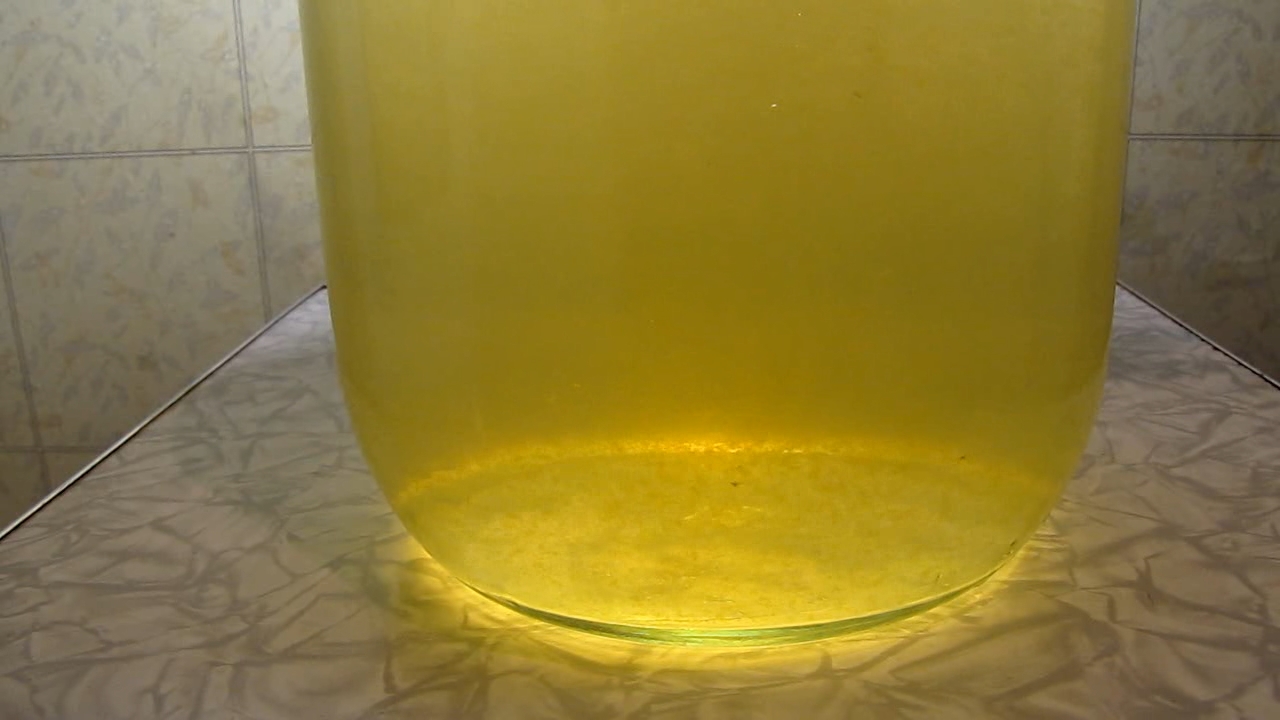
|

|
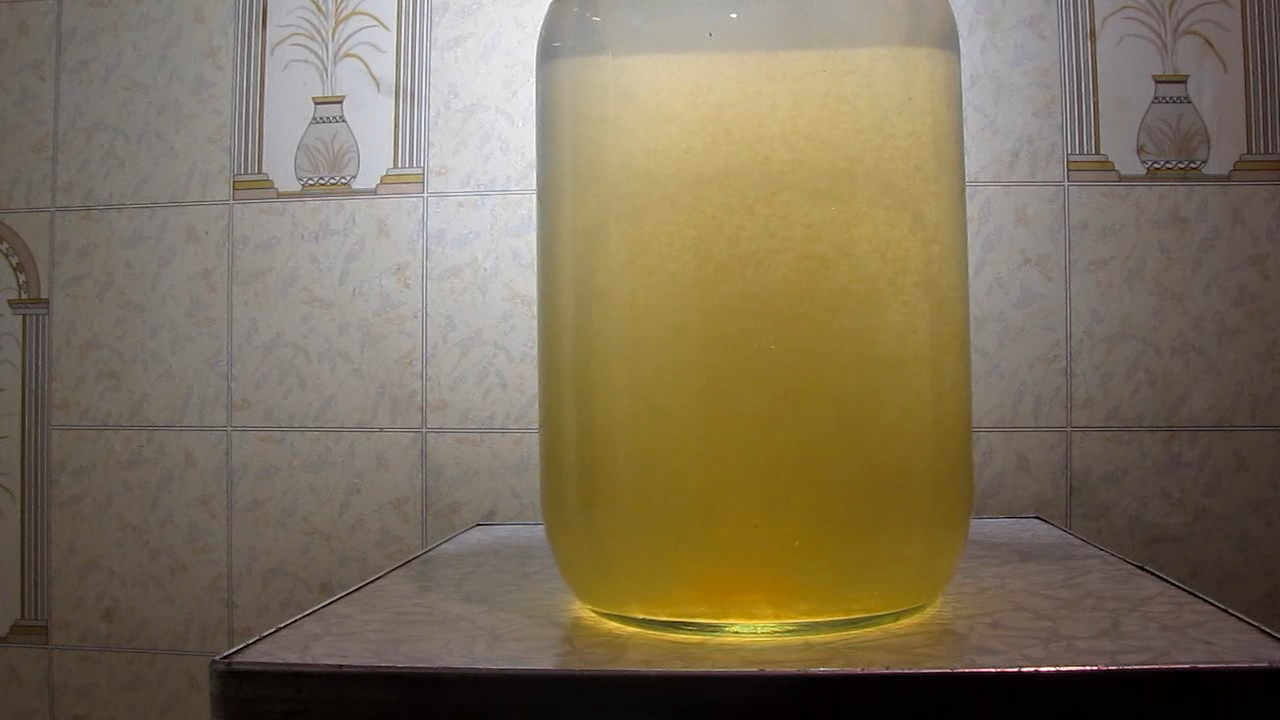
|
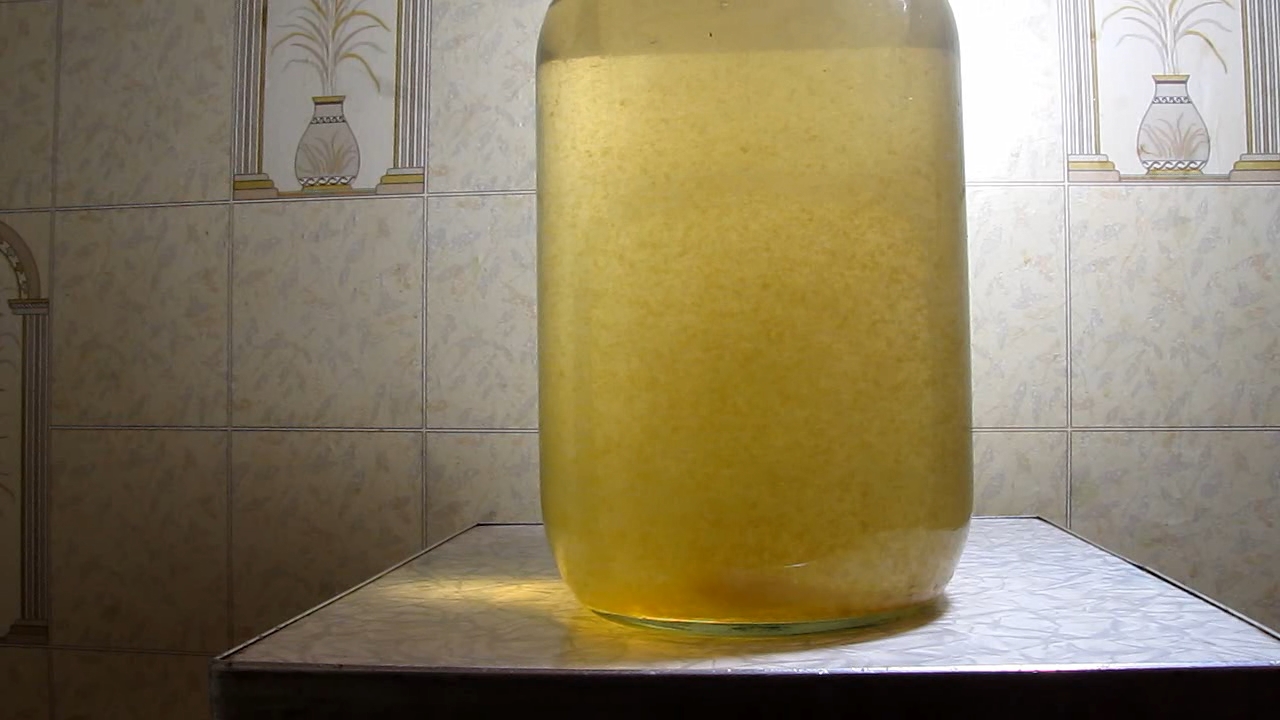
|
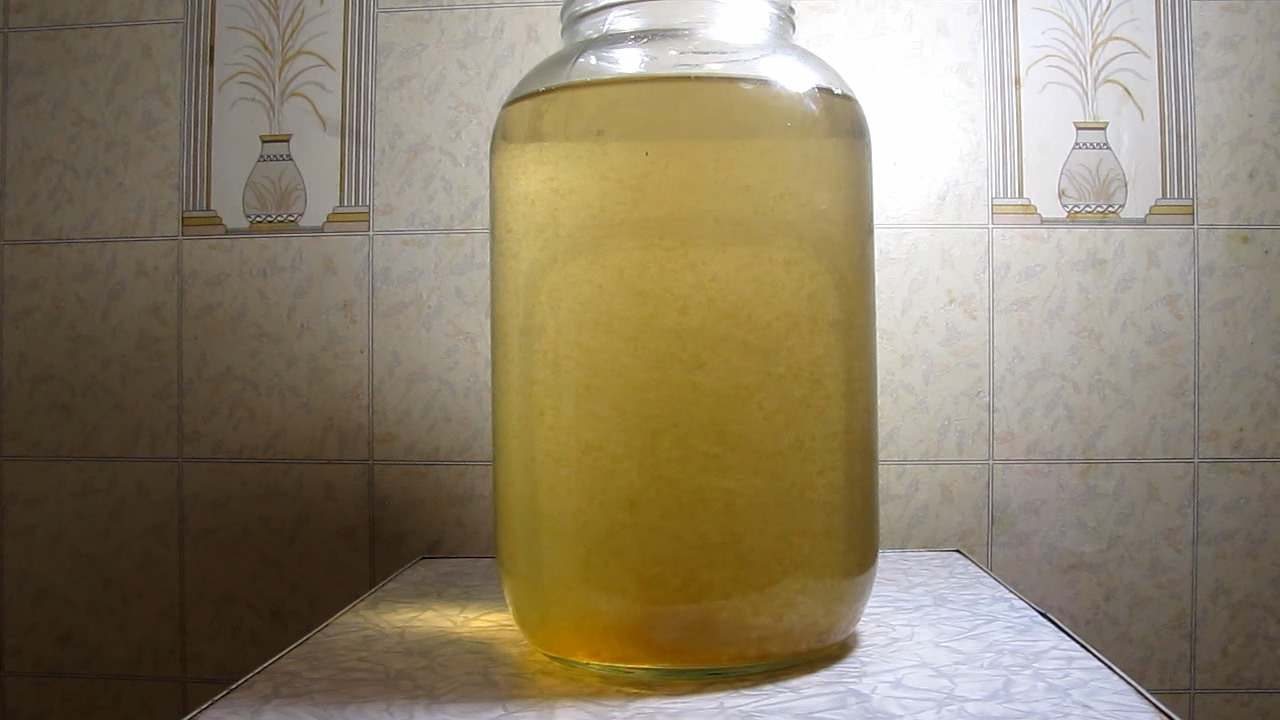
|
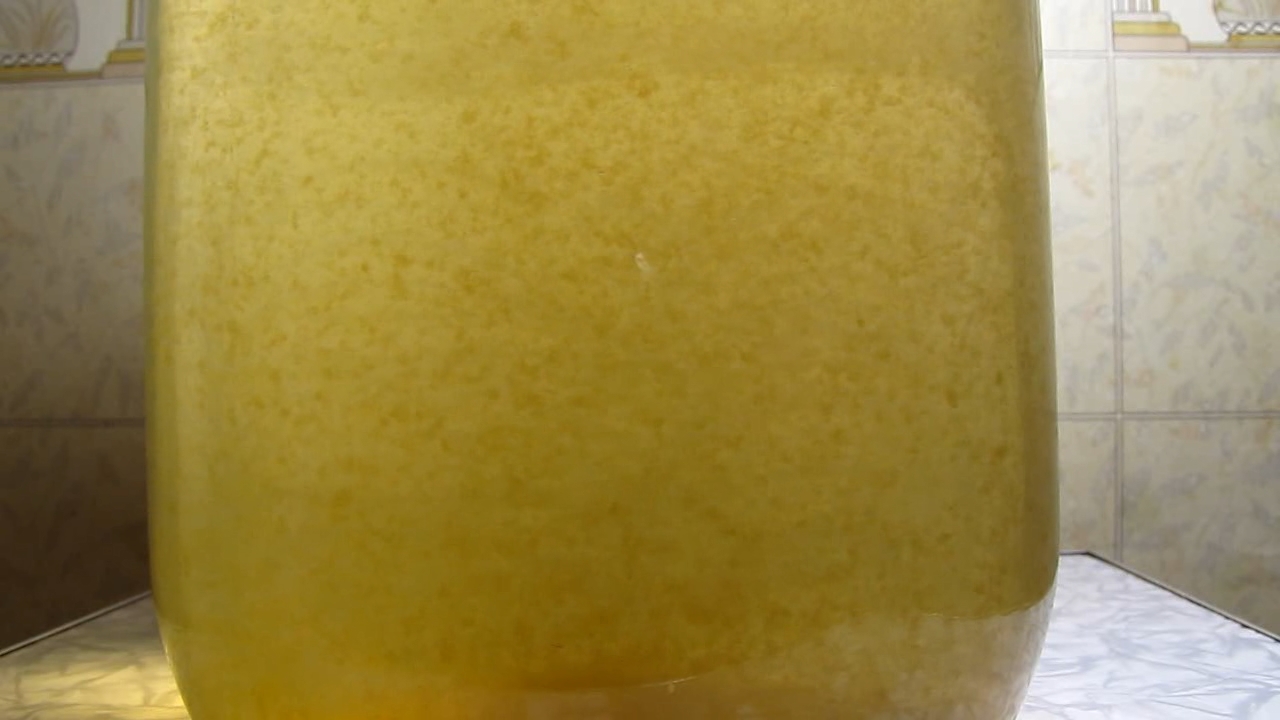
|
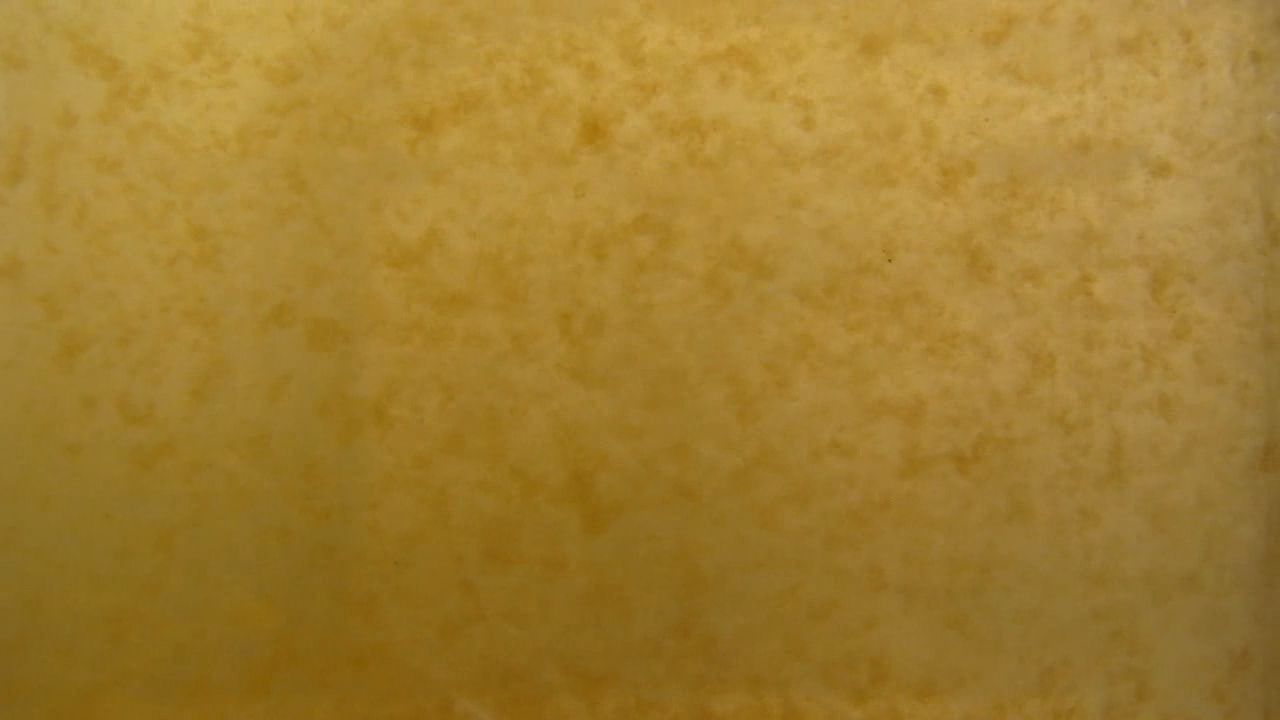
|
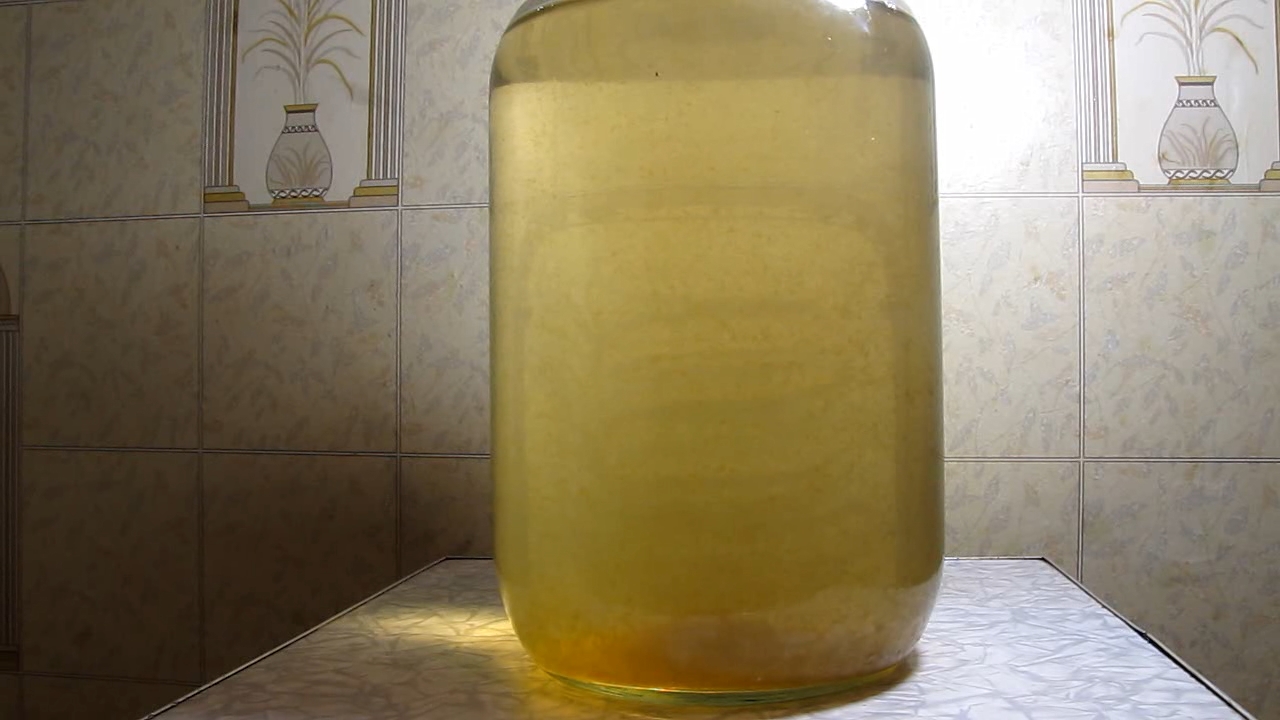
|

|
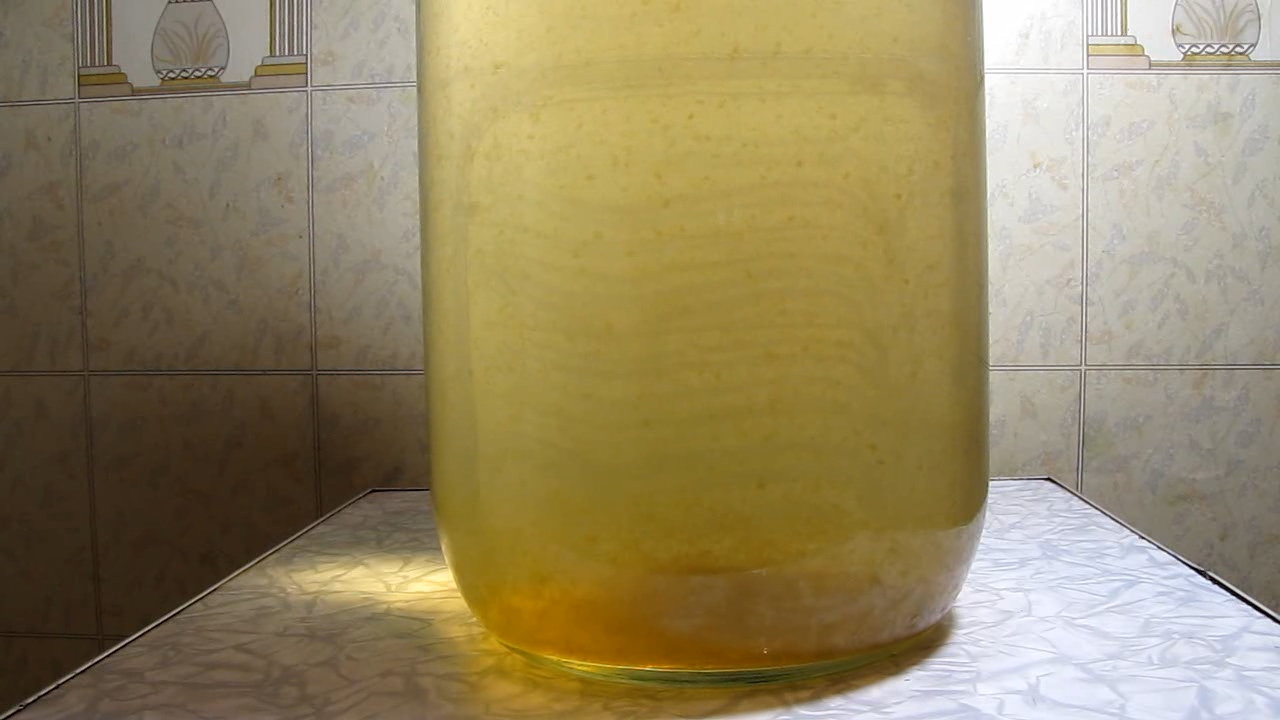
|
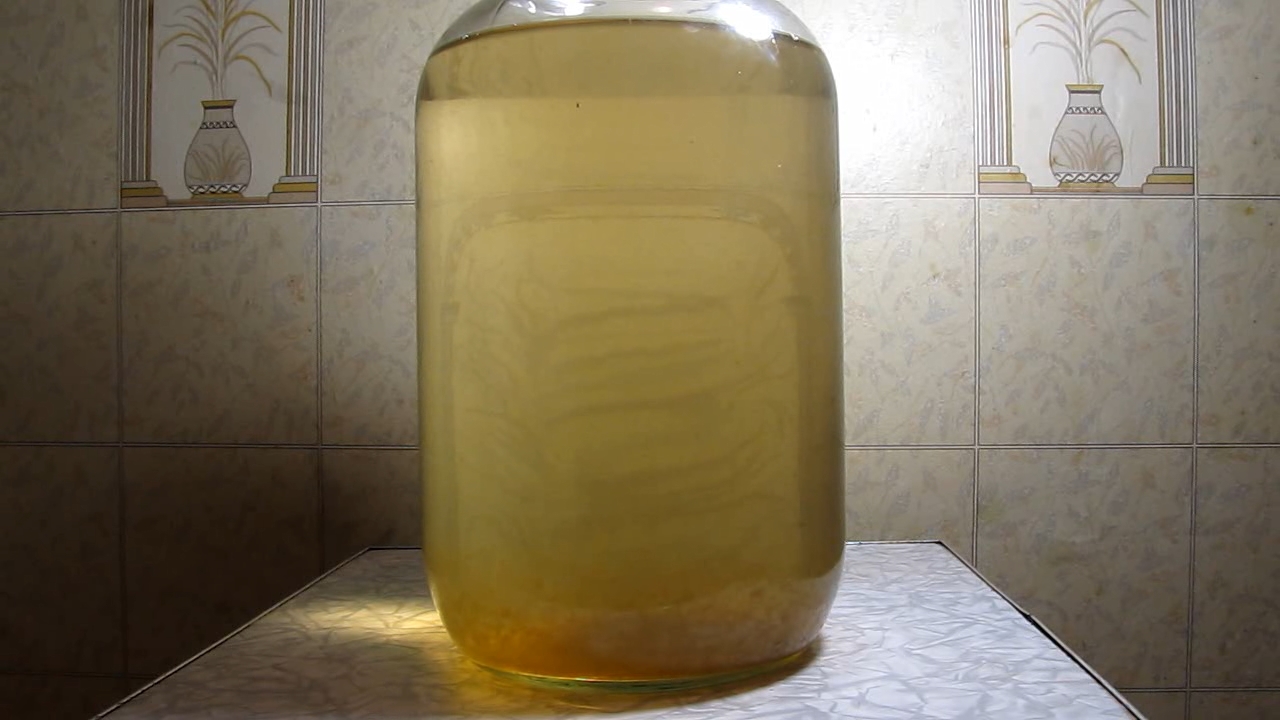
|

|

|
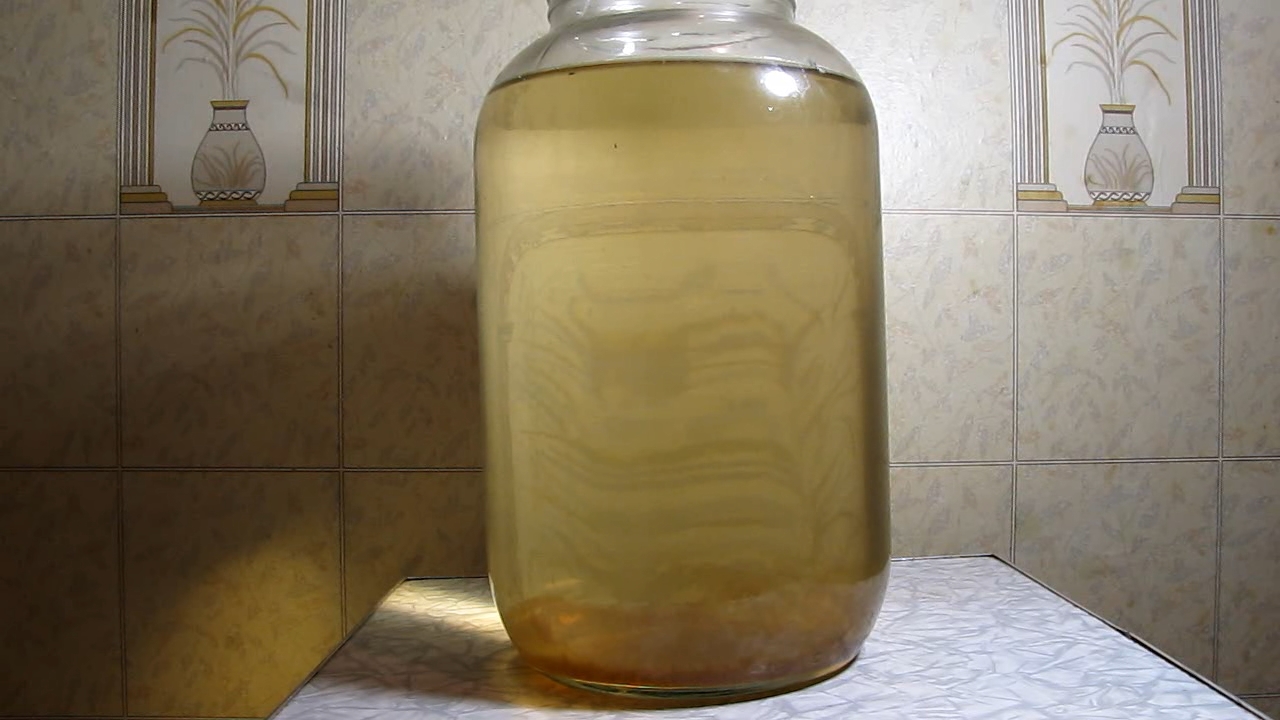
|
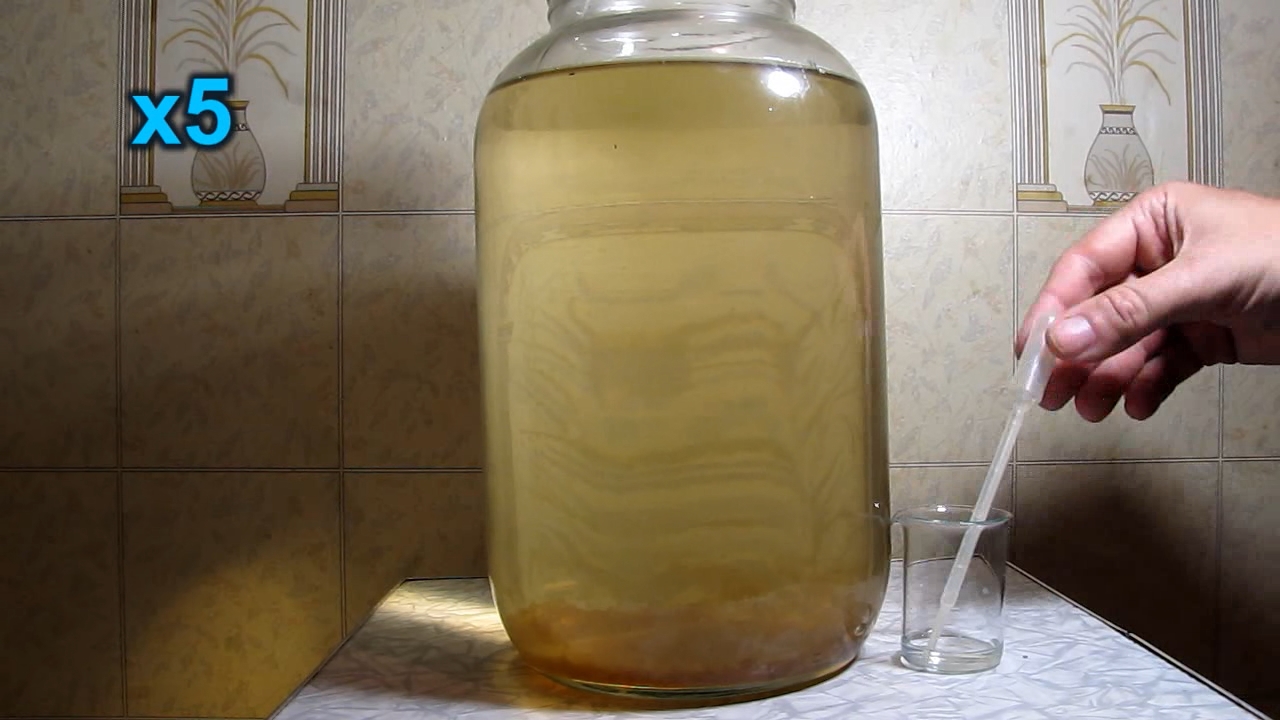
|
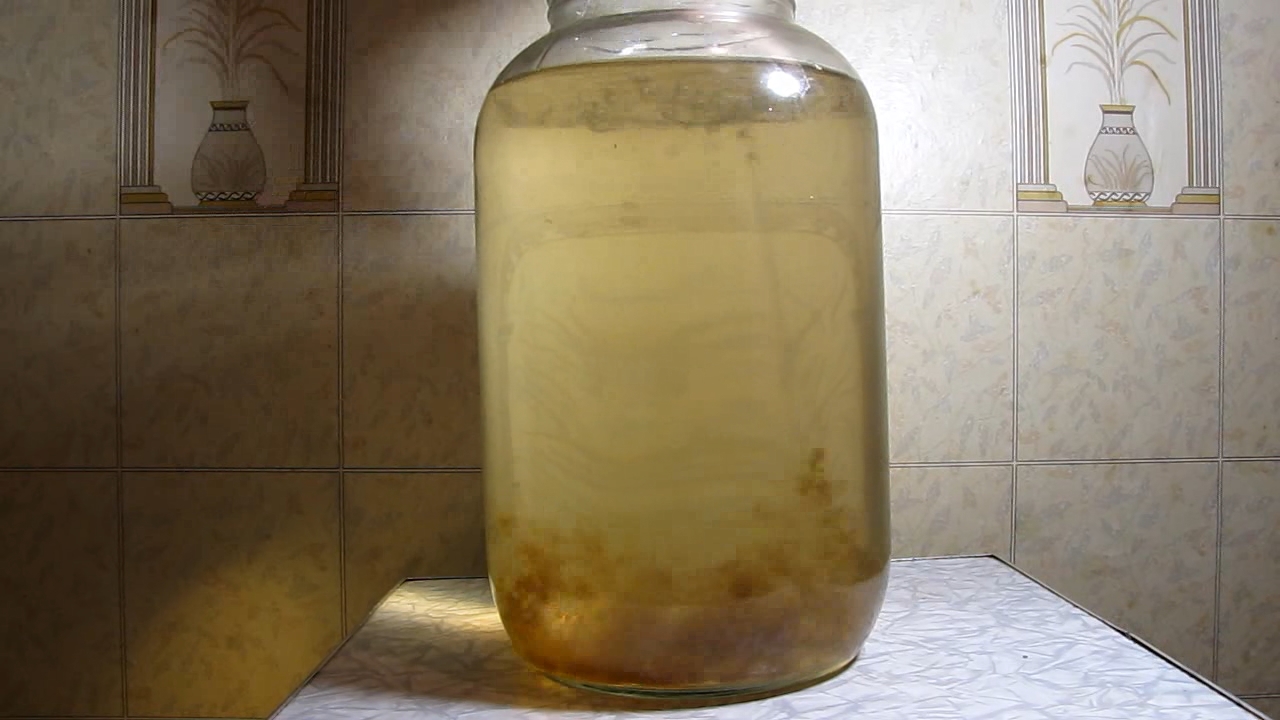
|

|
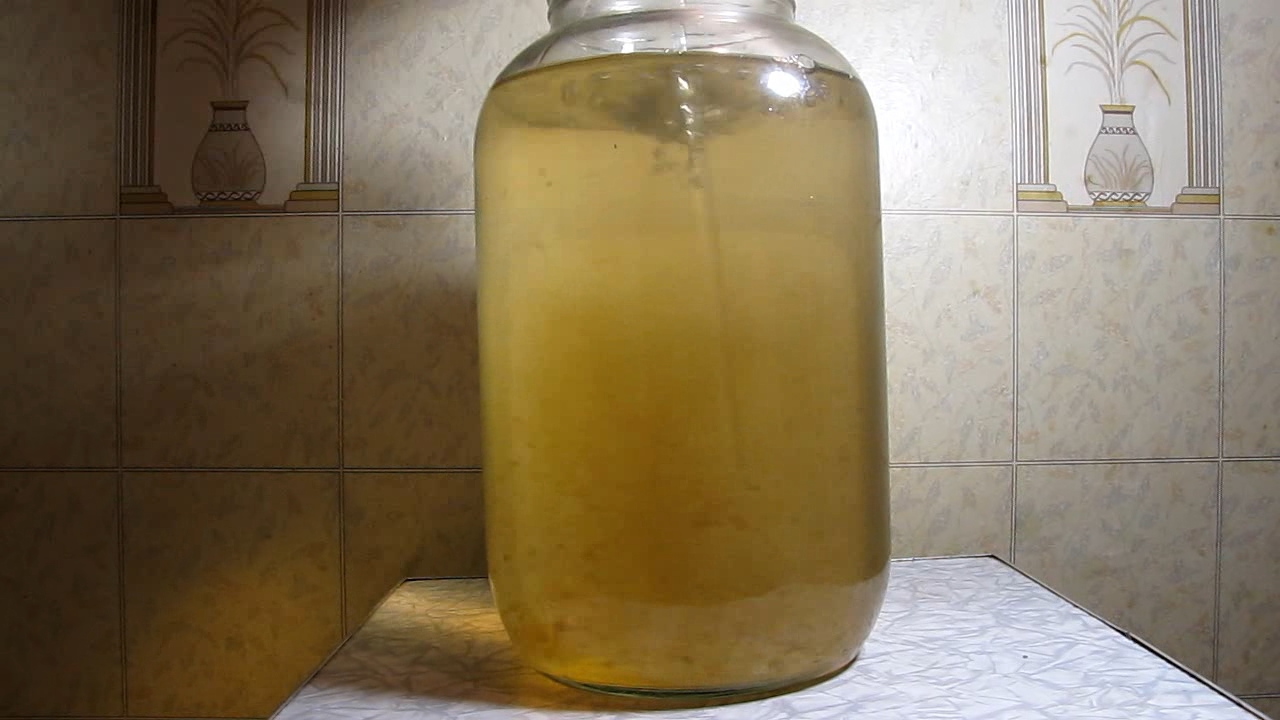
|
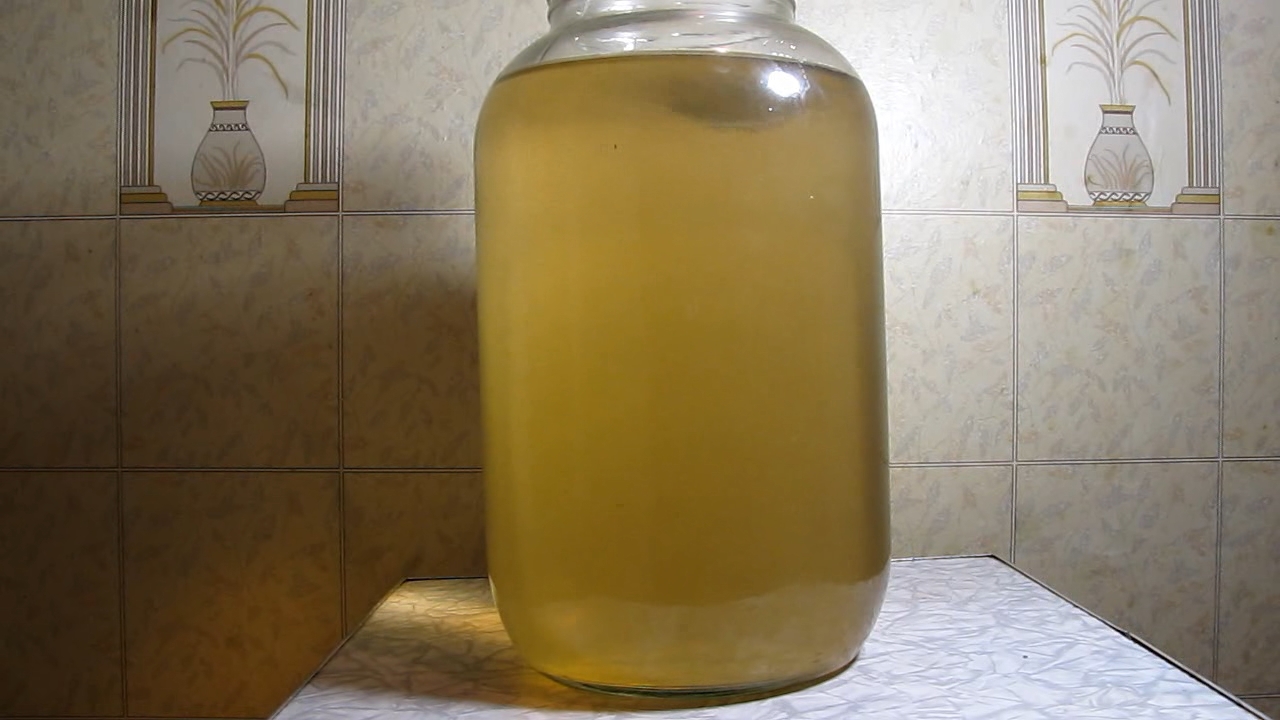
|
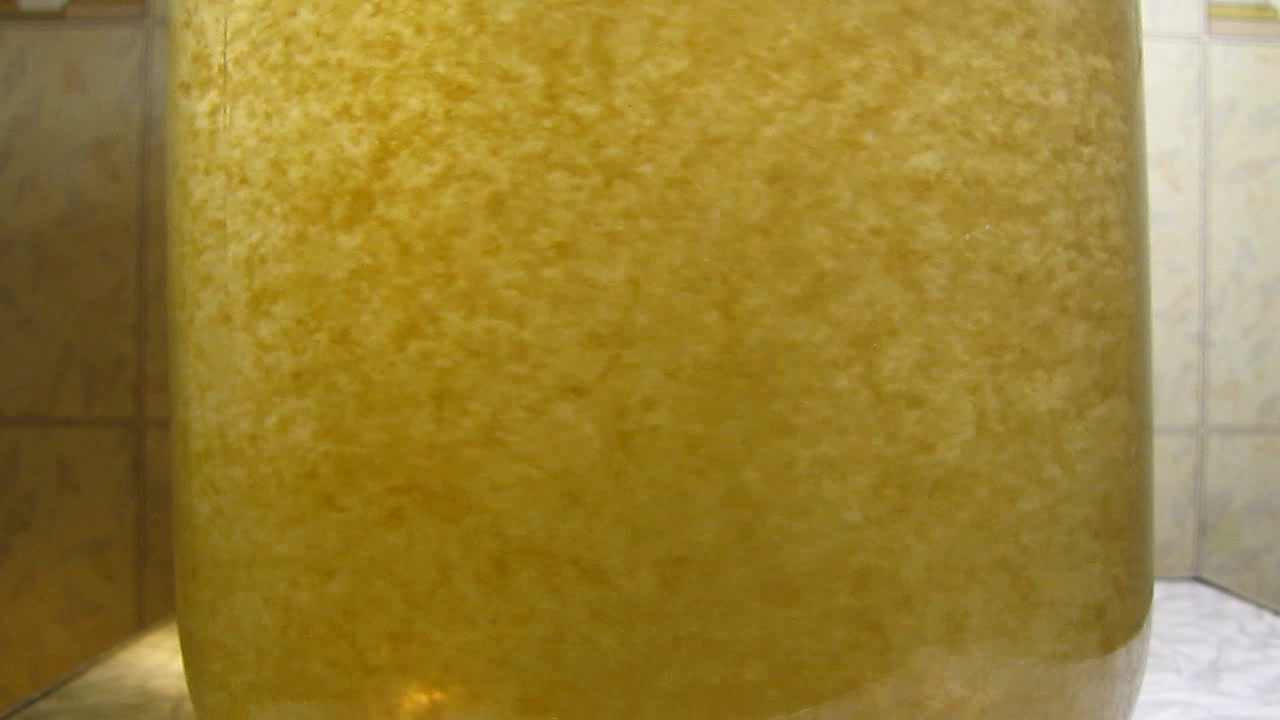
|
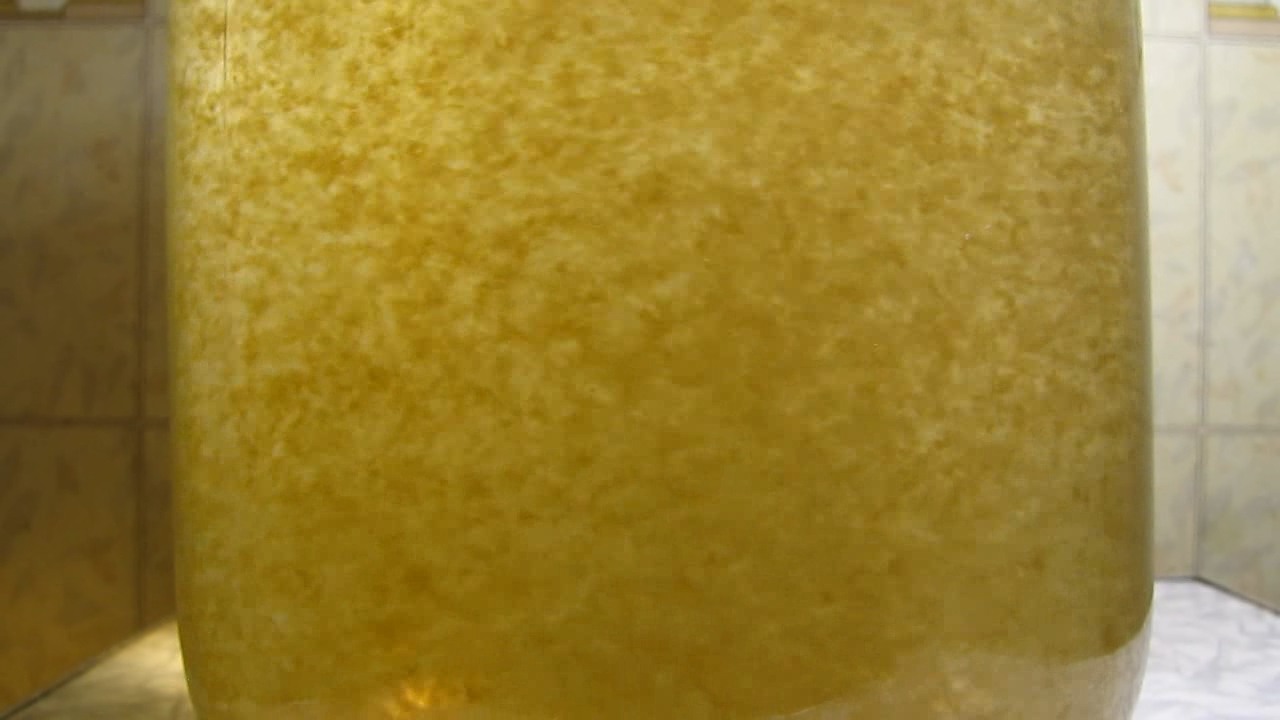
|
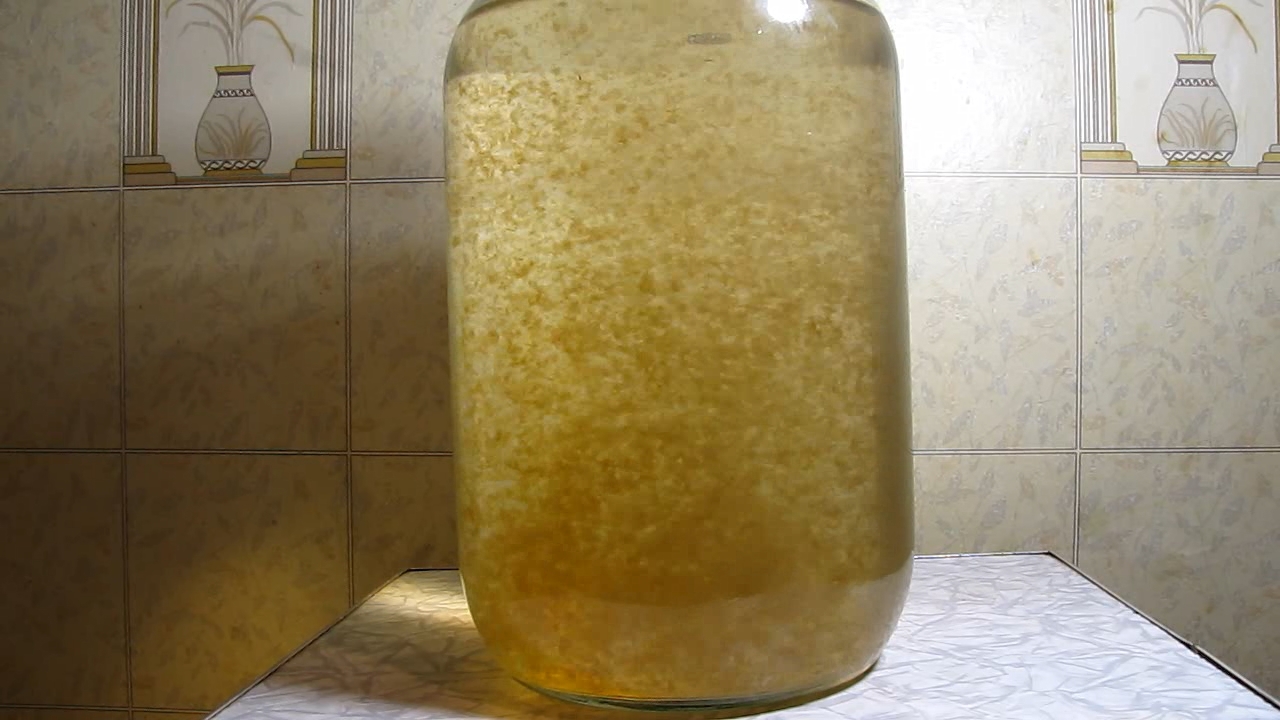
|

|

|

|

|
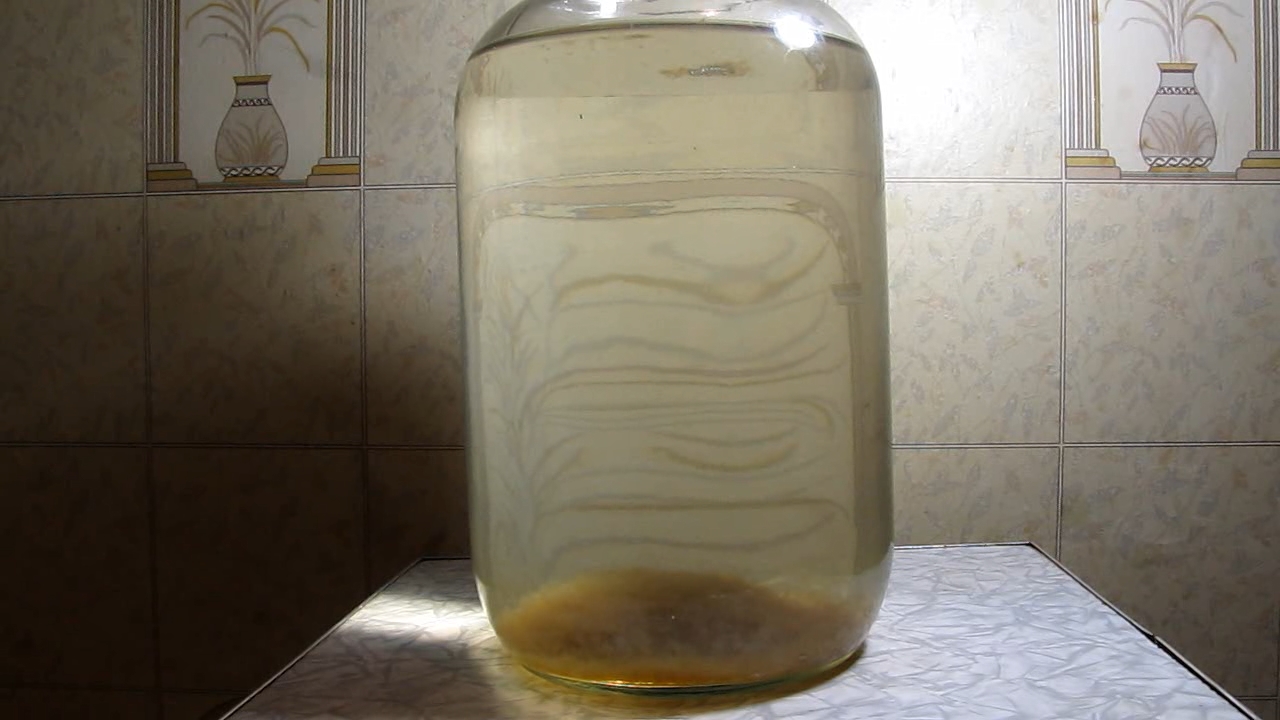
|
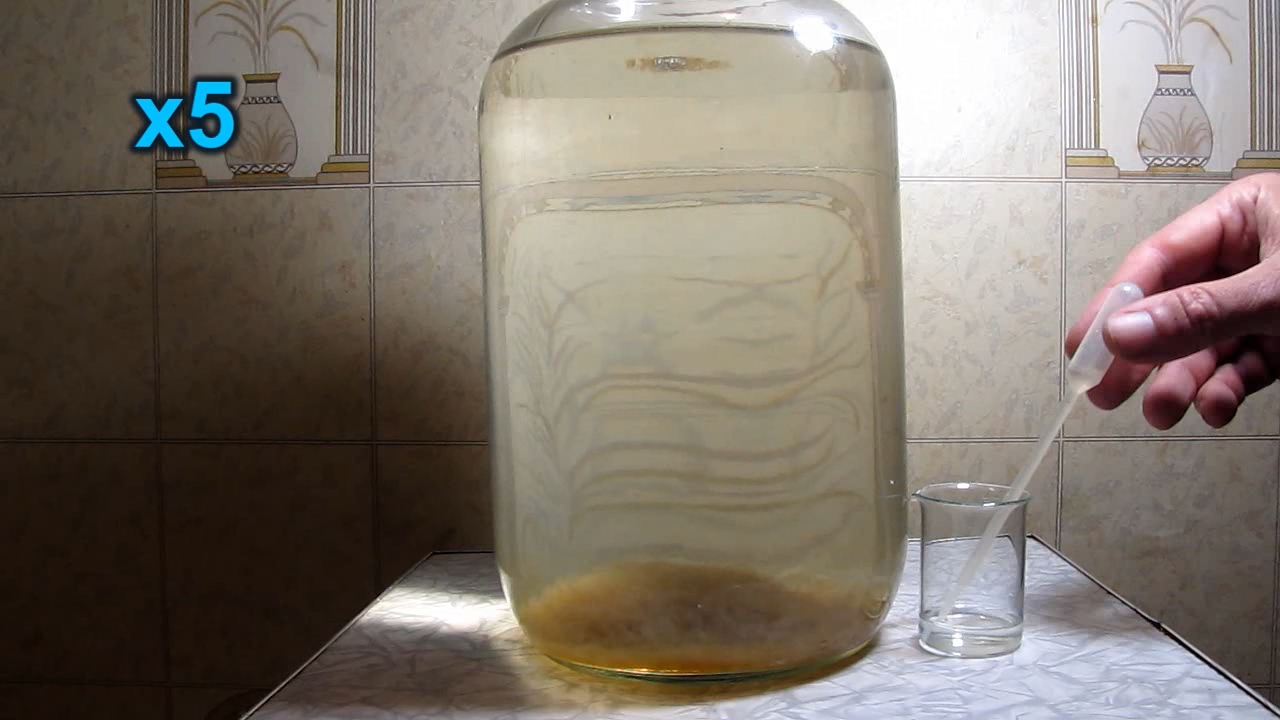
|
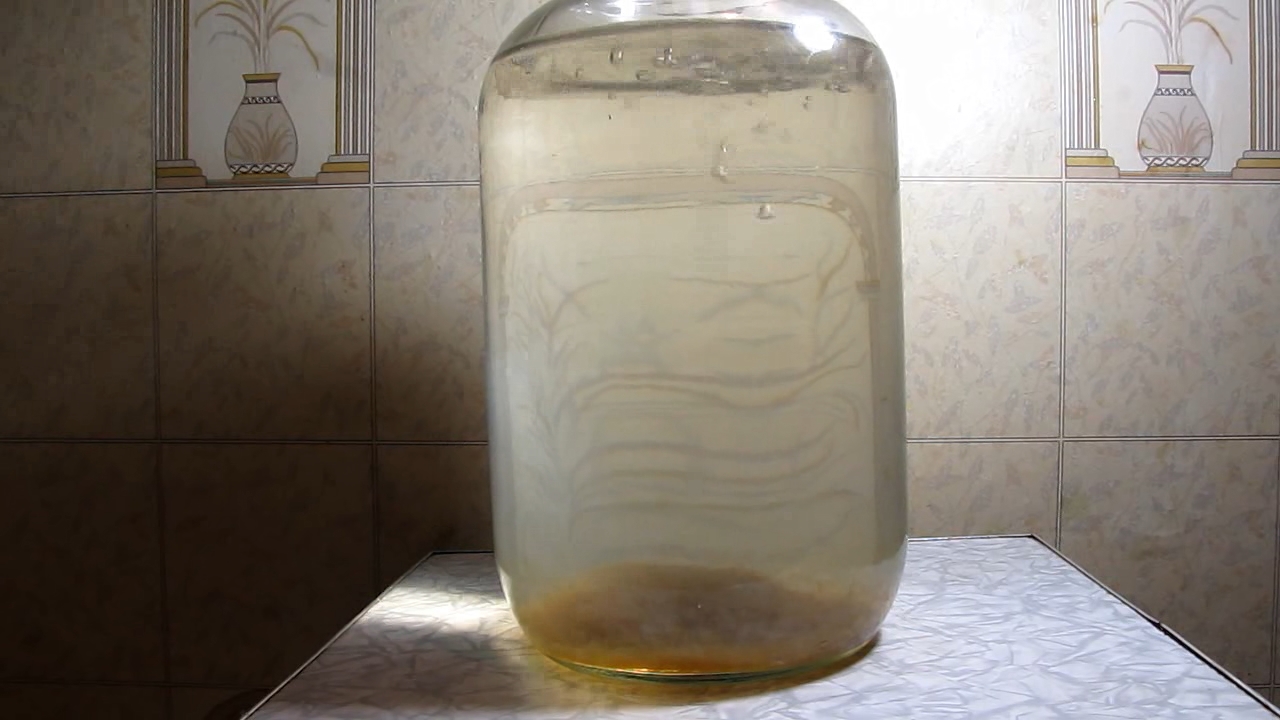
|

|
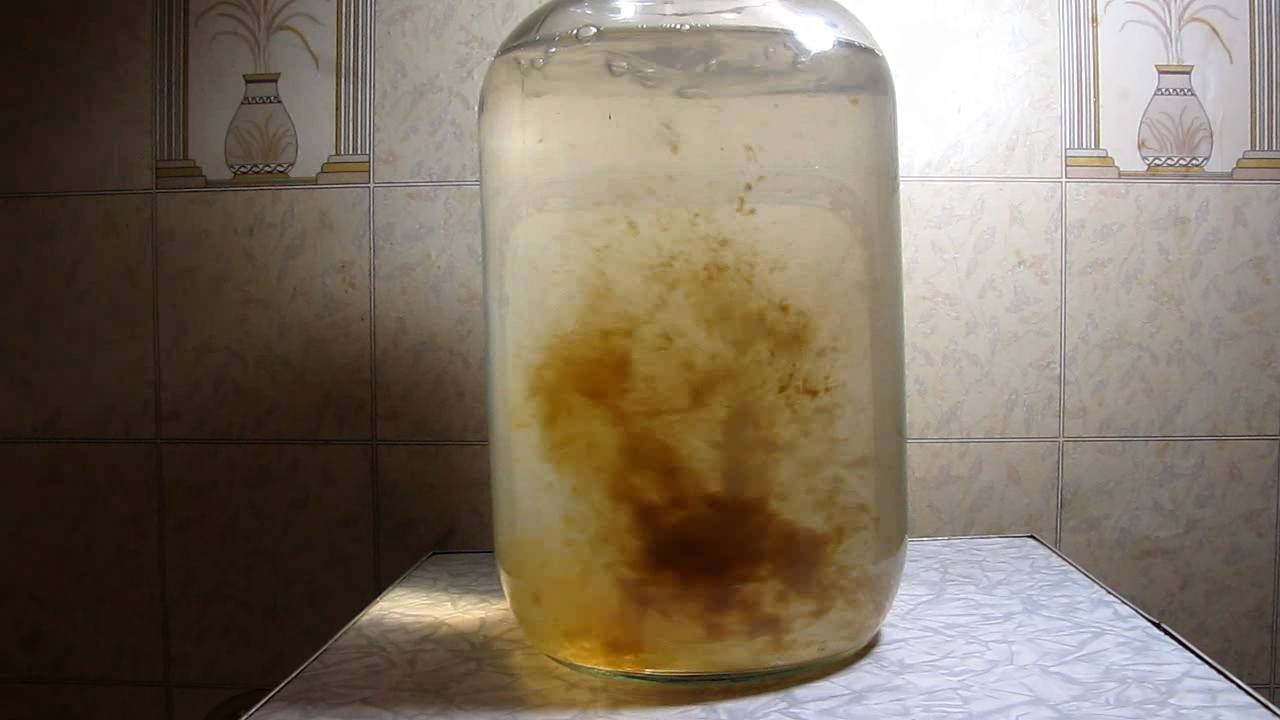
|
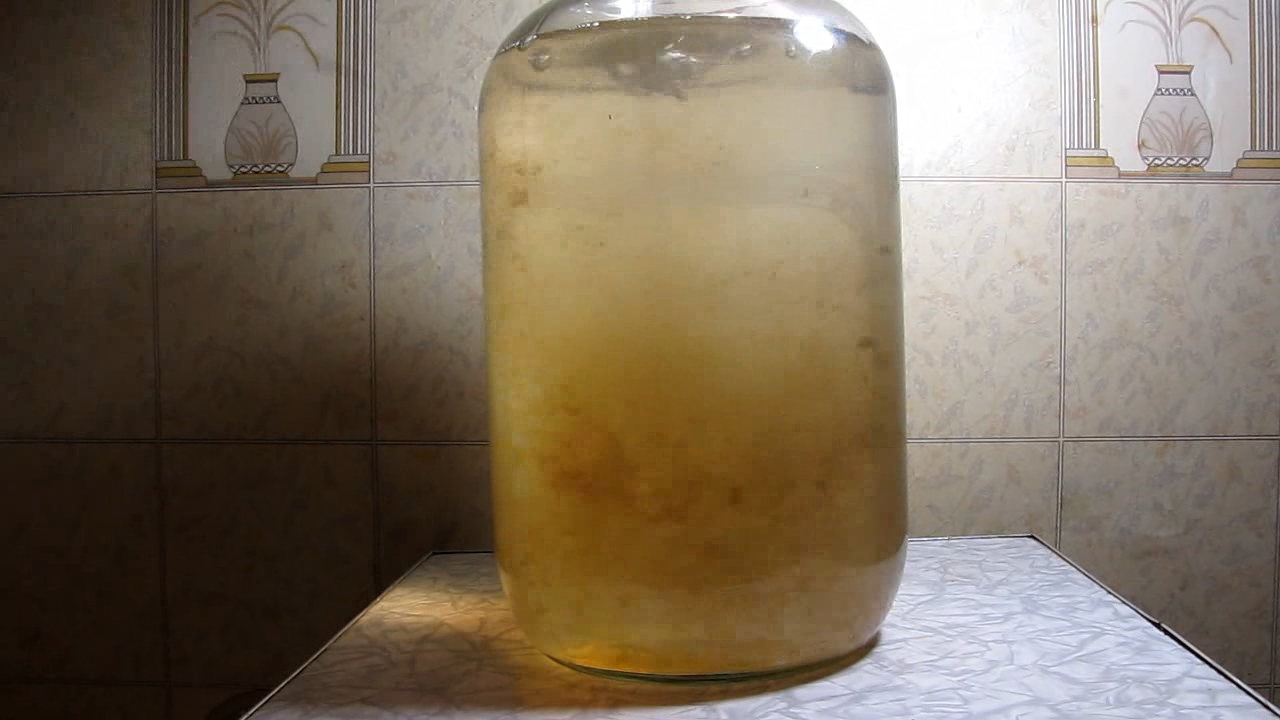
|
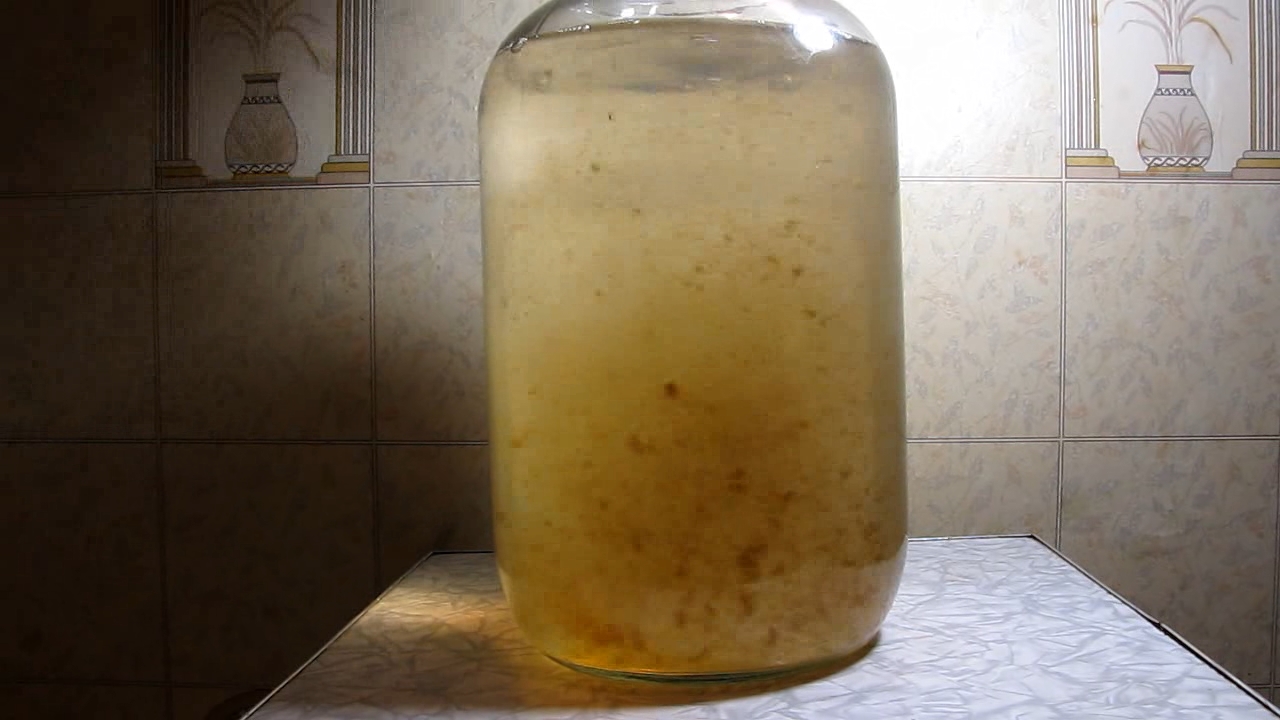
|
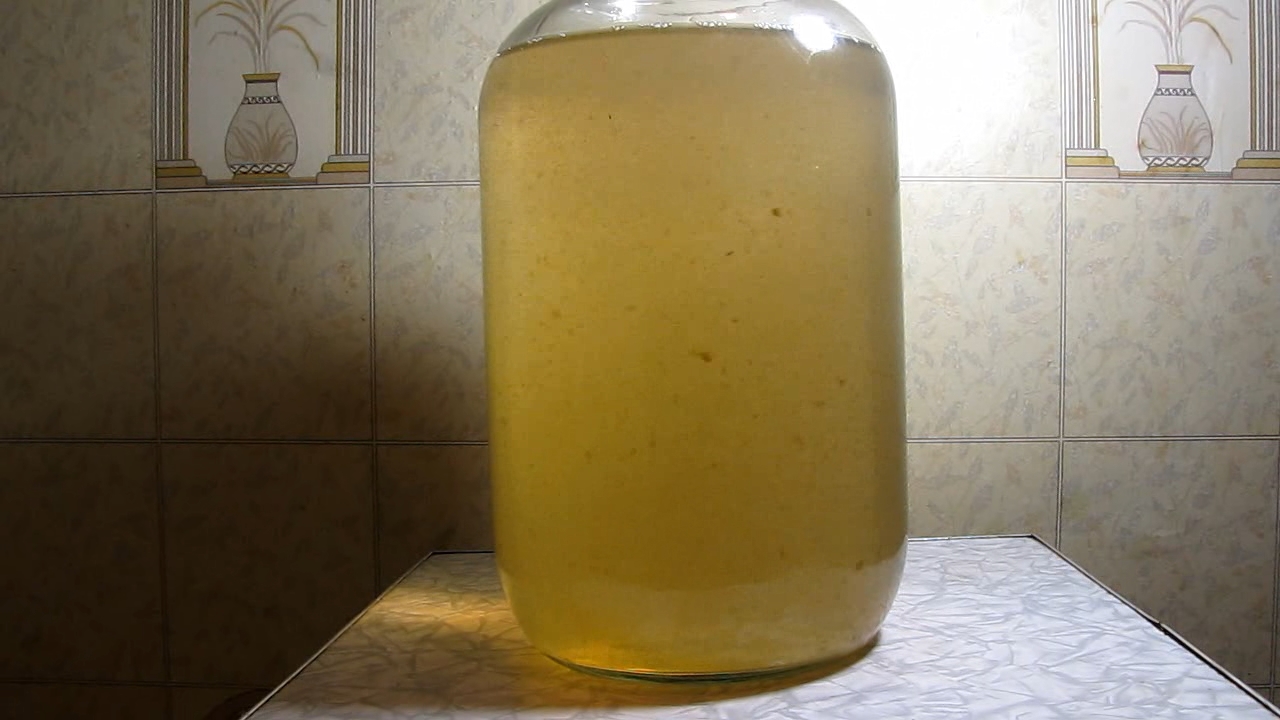
|
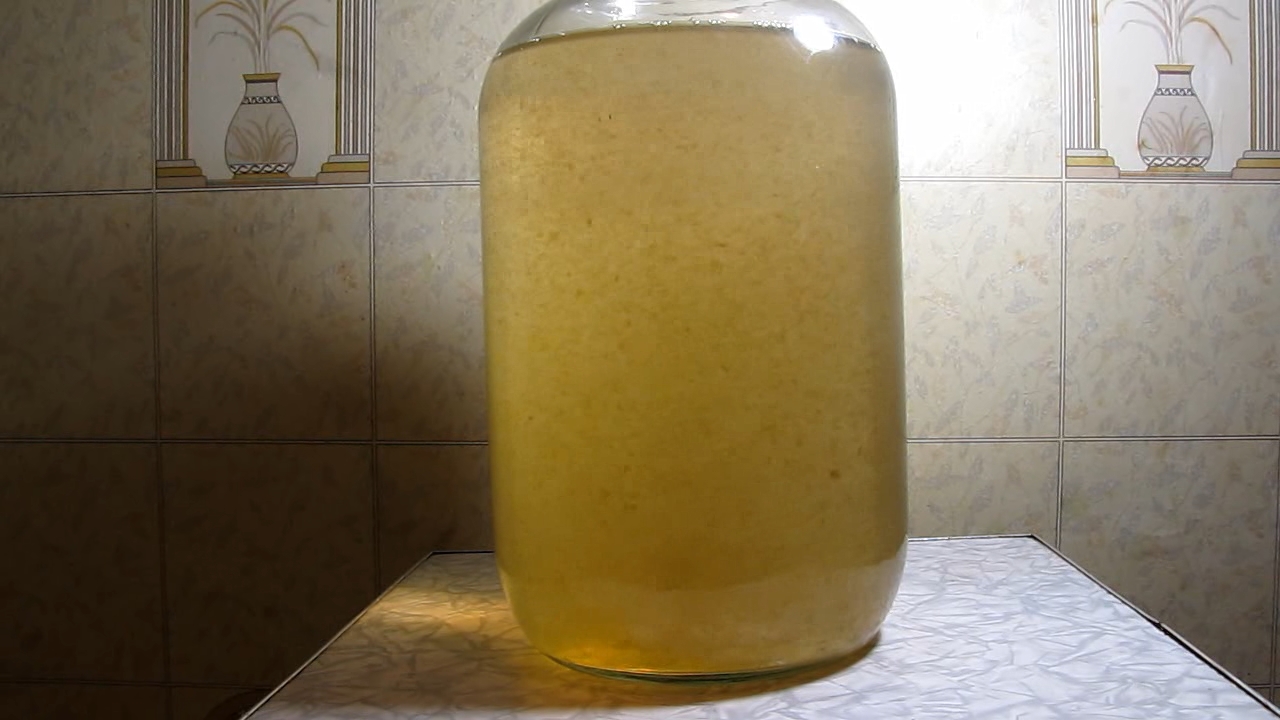
|
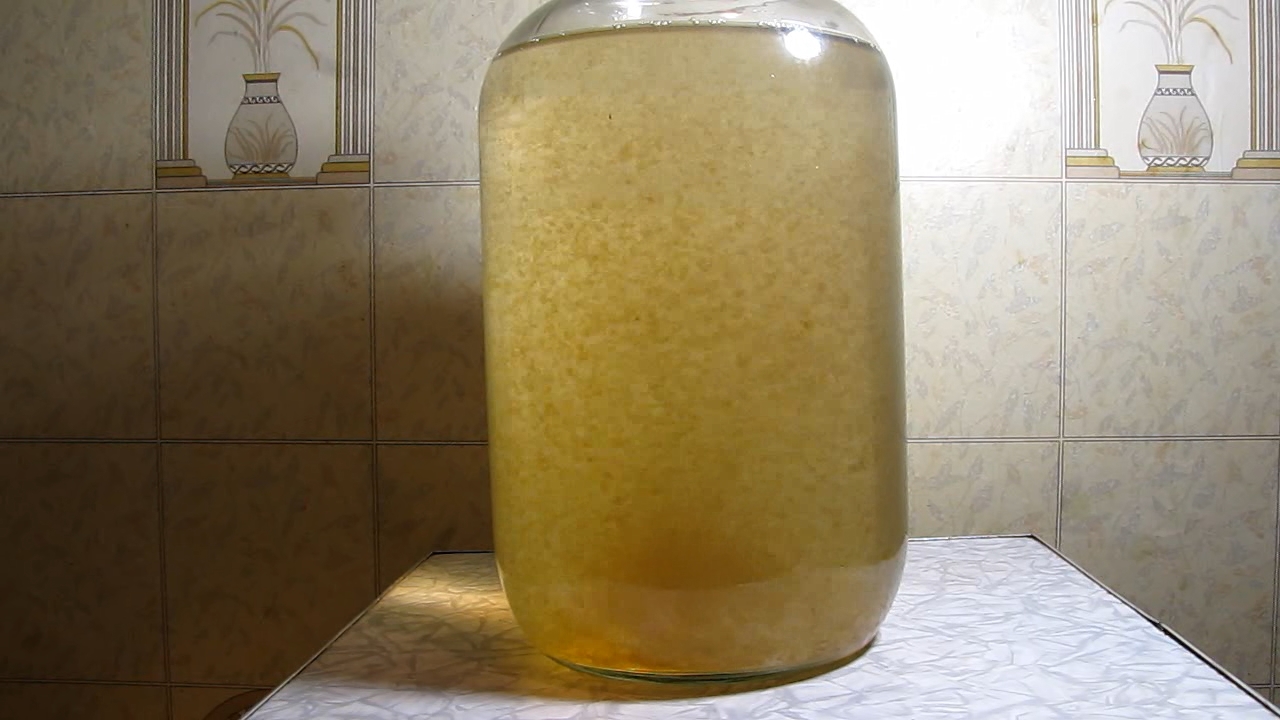
|
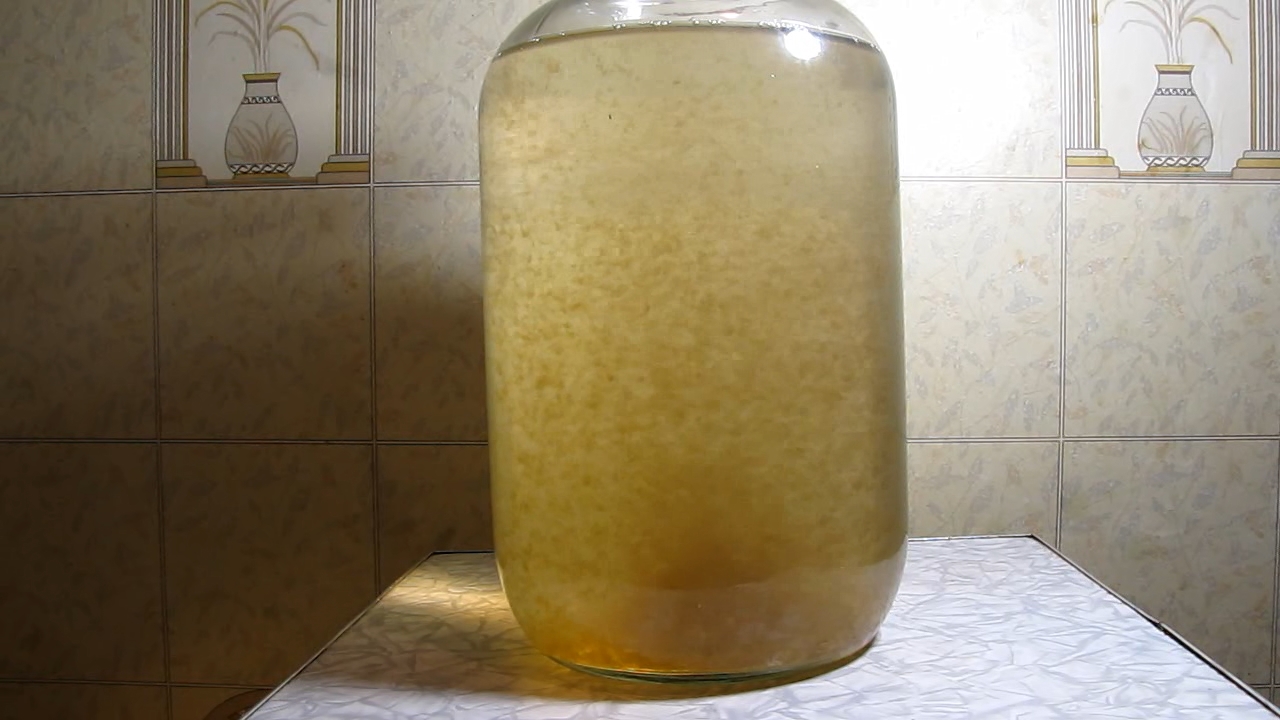
|
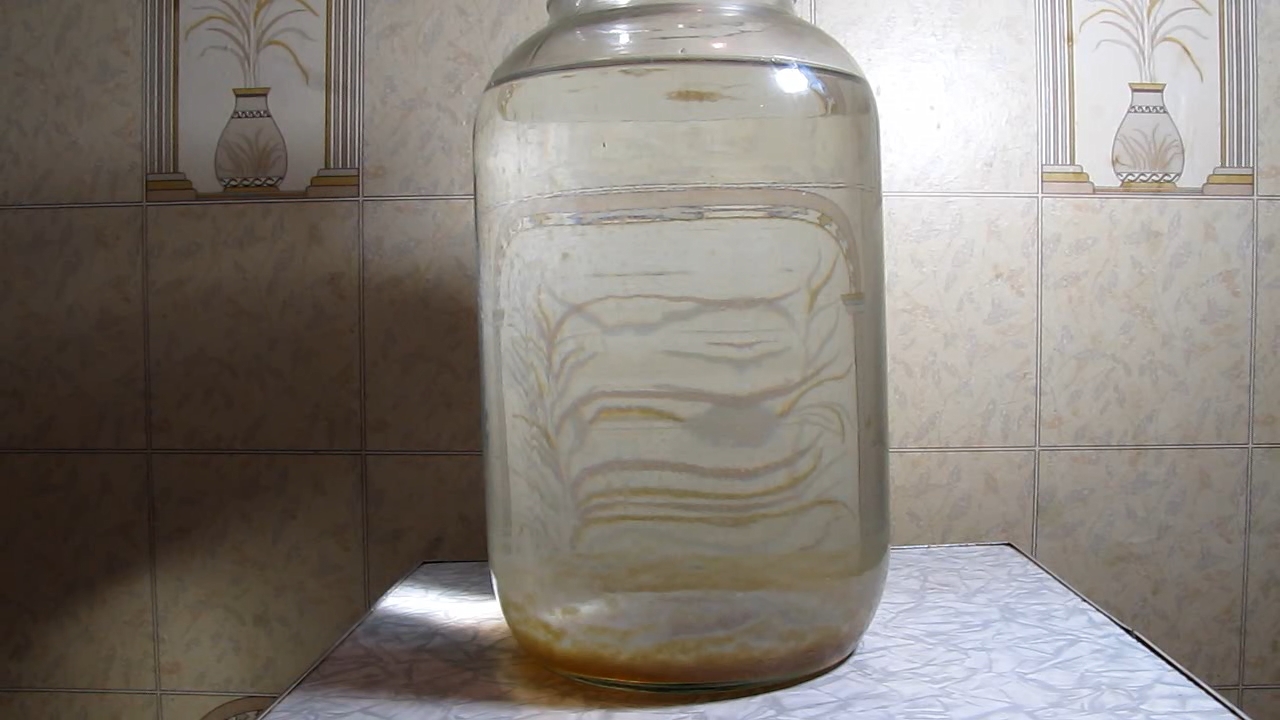
|
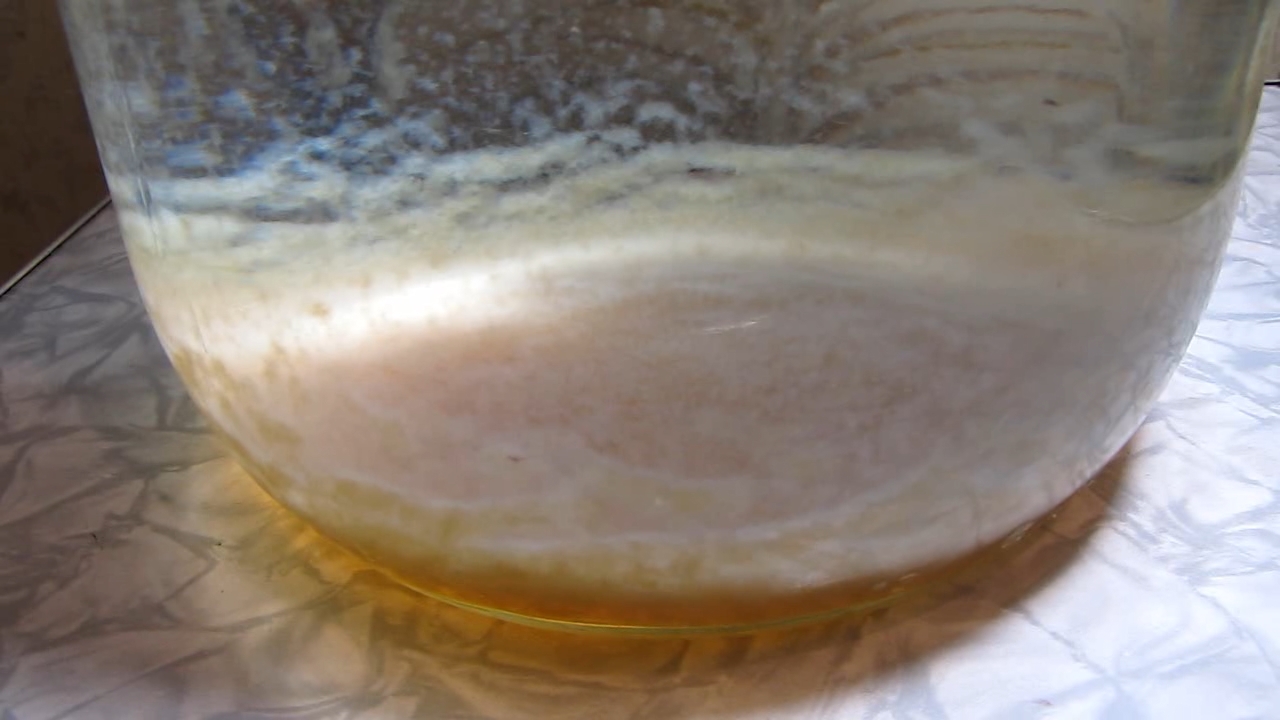
|

|
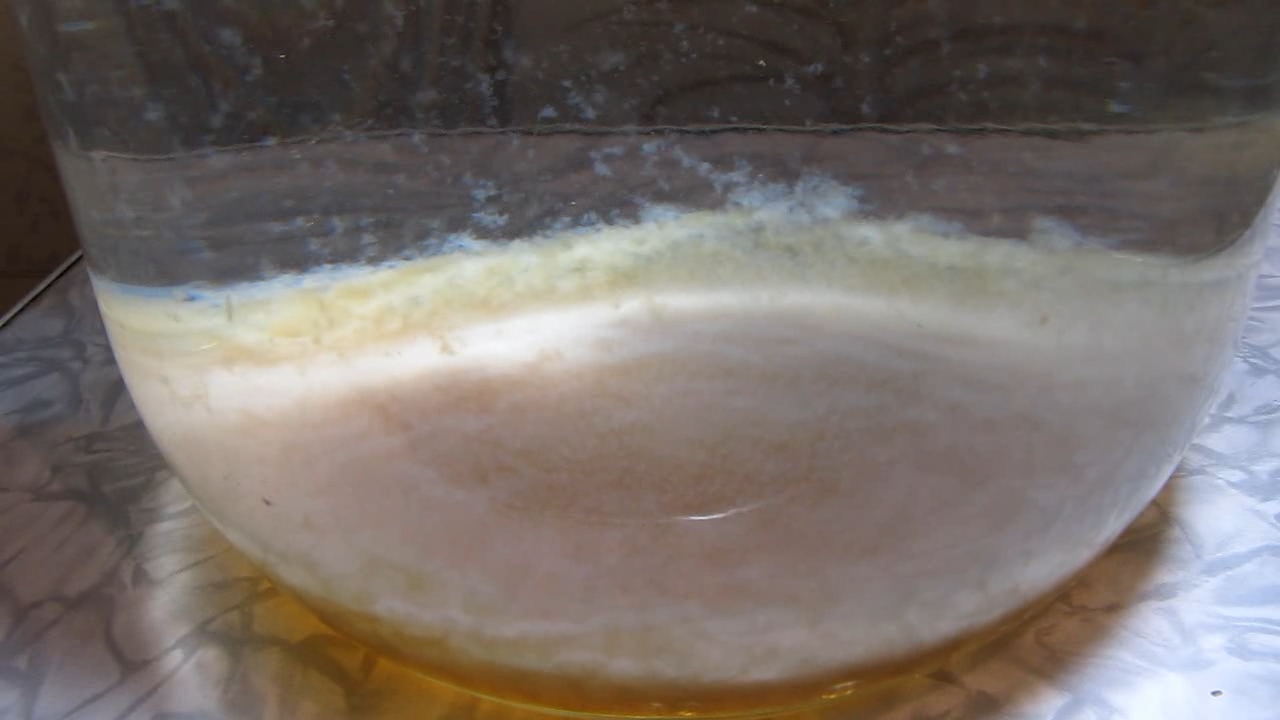
|

|

|
|
Комментарии
К1
На фото следует исправить Al3(SO4)2 на Al2(SO4)3.
Попробуйте взять образец воды из скважины, содержащей железо (2+), и неделю наблюдать изменения. Она сама по себе очистится. К1-1 Спасибо. Исправил не только на фото - пришлось перемонтировать видео. Насчет воды из со скважины с железом (II) - пока что такой воды под рукой нет. Иногда вода с железом (II) текла из водопроводного крана на работе (бесцветная вода, которая давала фиолетовую окраску с черным чаем и коричневый осадок - при стоянии на воздухе), но только тогда, когда водопроводом долго не пользовались. Хорошая новость в том, что такую воду можно приготовить искусственно: в образец водопроводной воды добавить немного растрова соли железа (II) и оставить образец стоять в банке. По возможности - сделаю. |